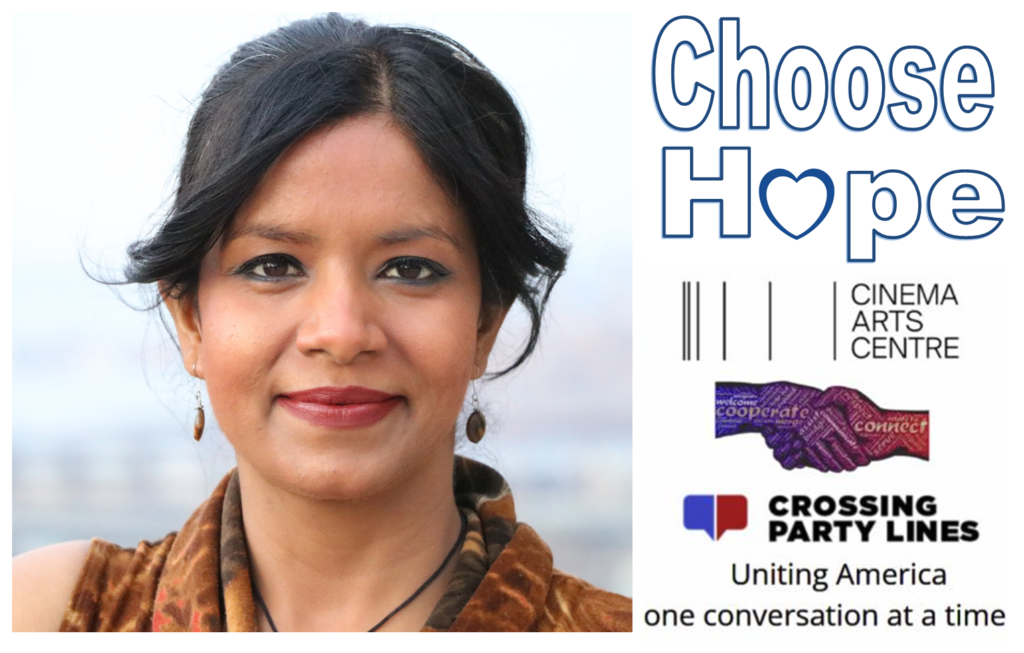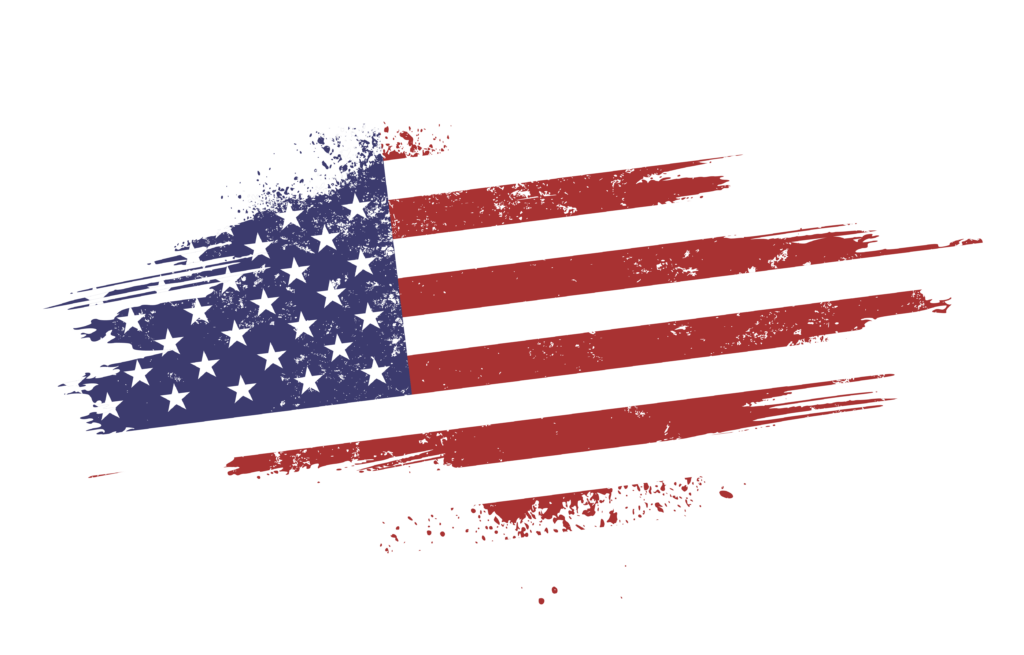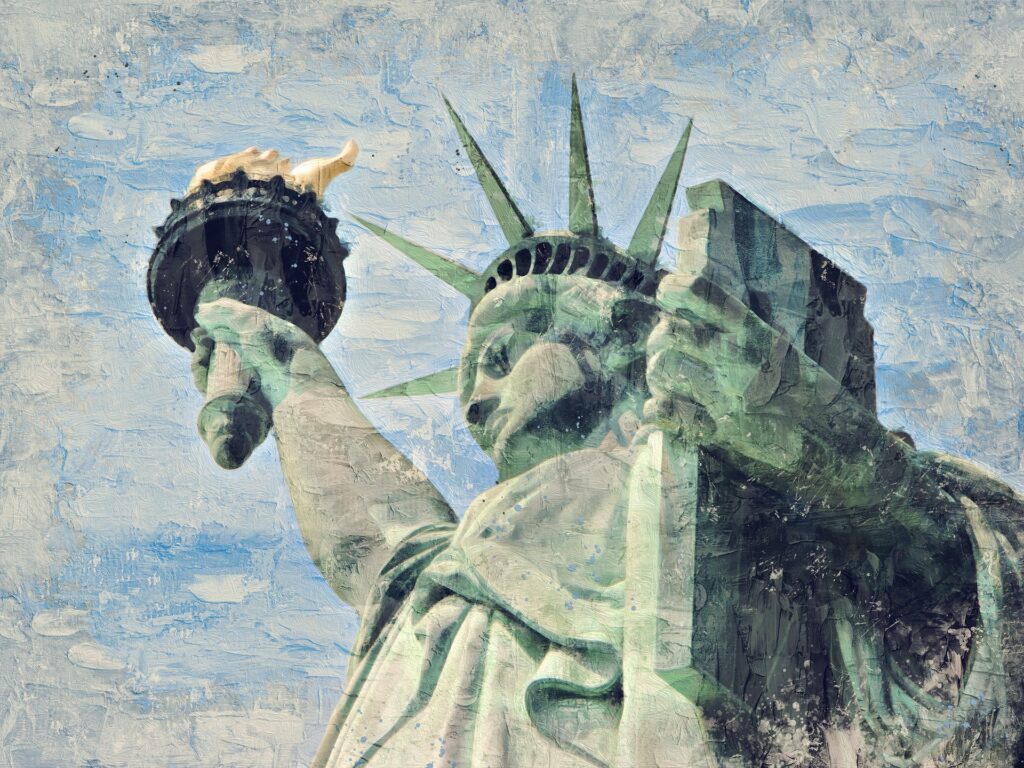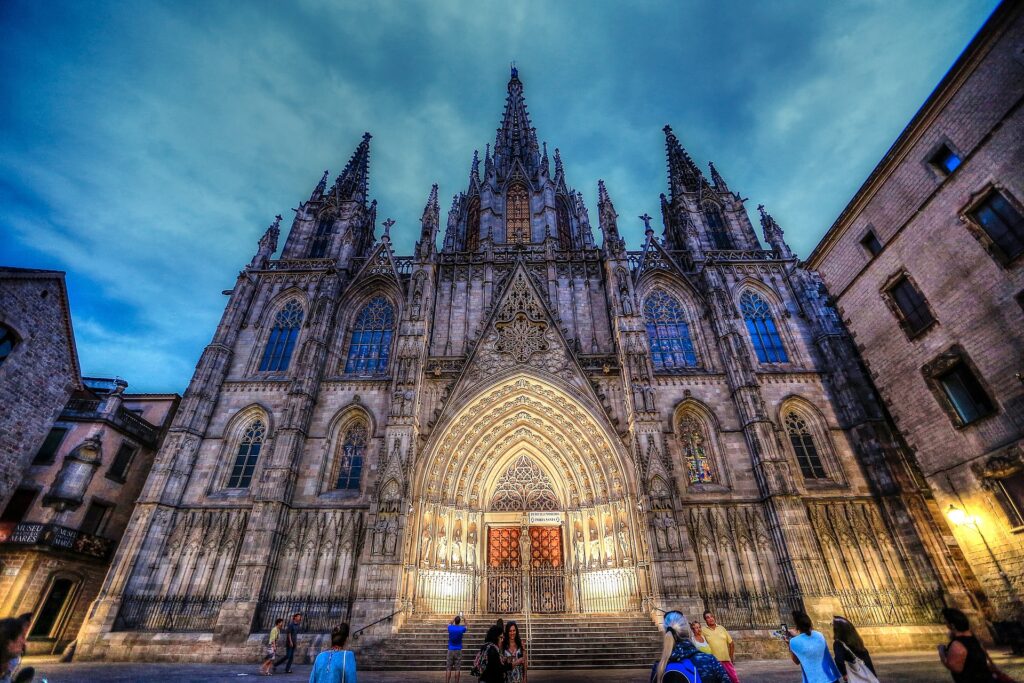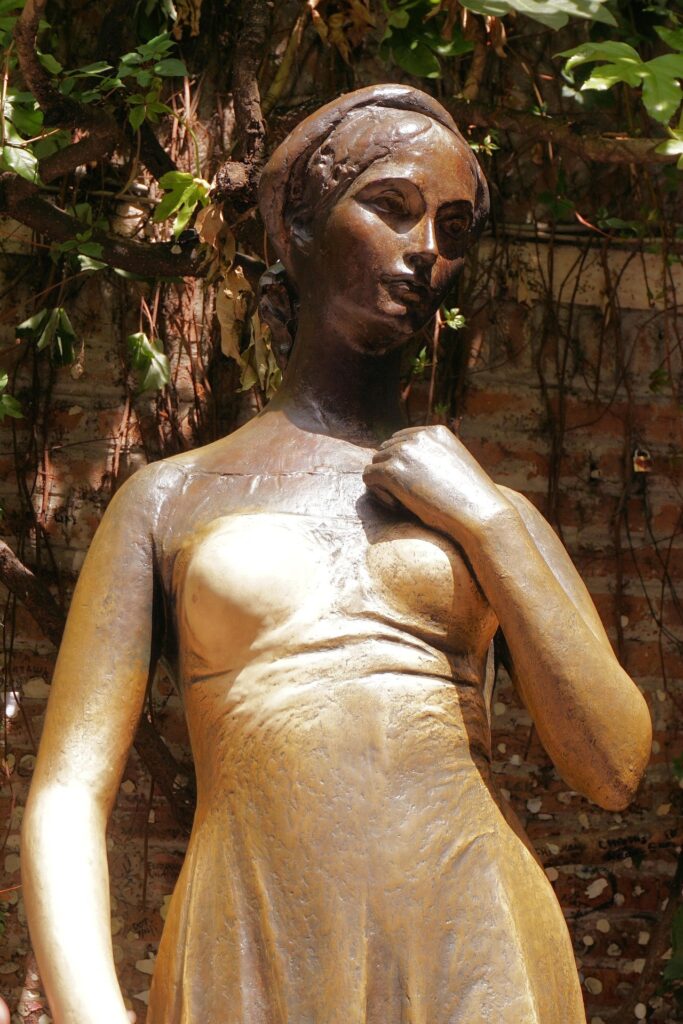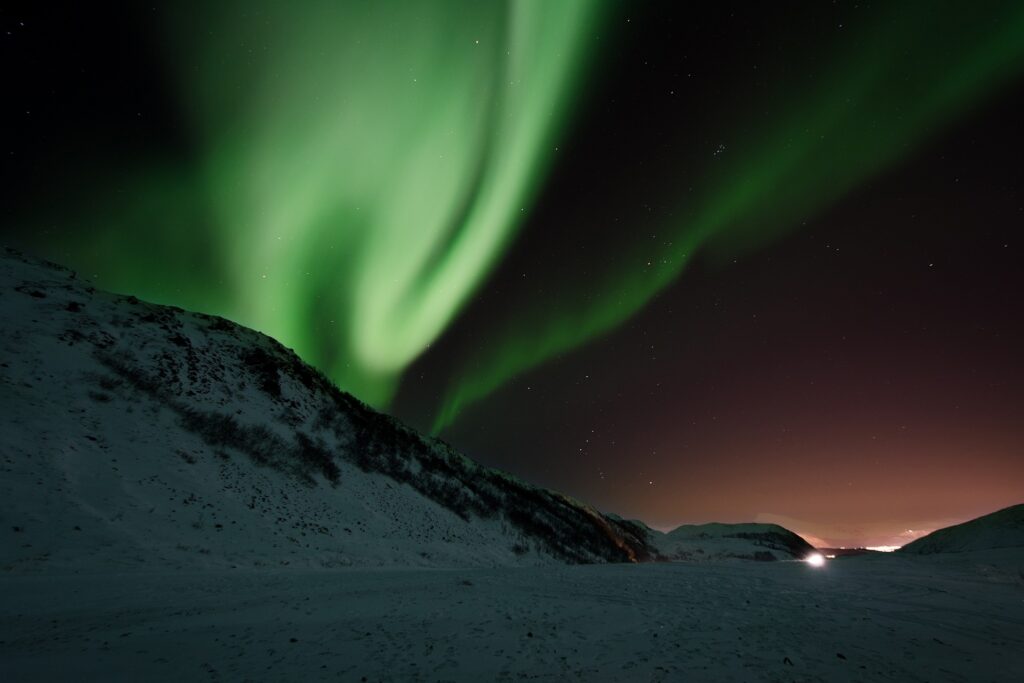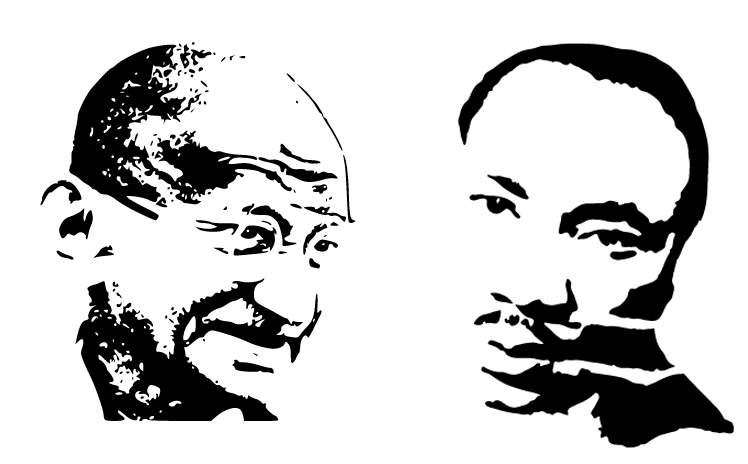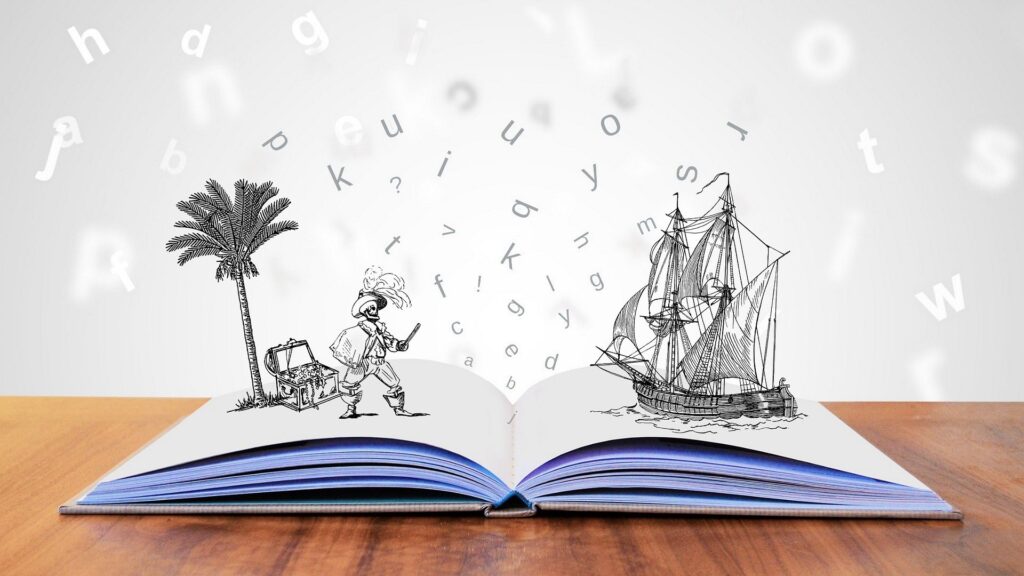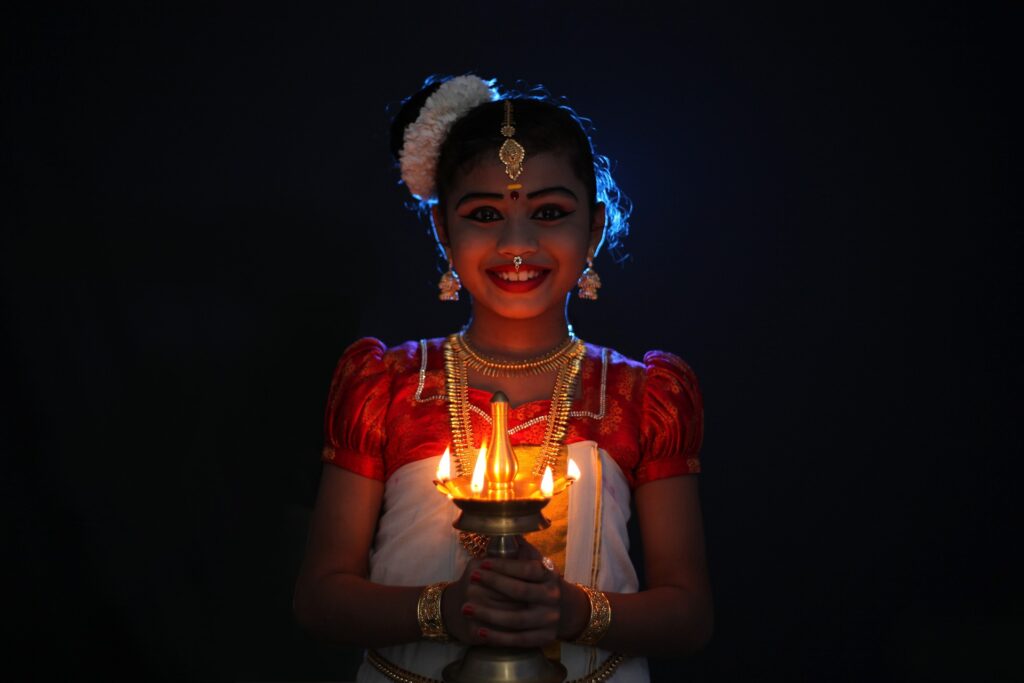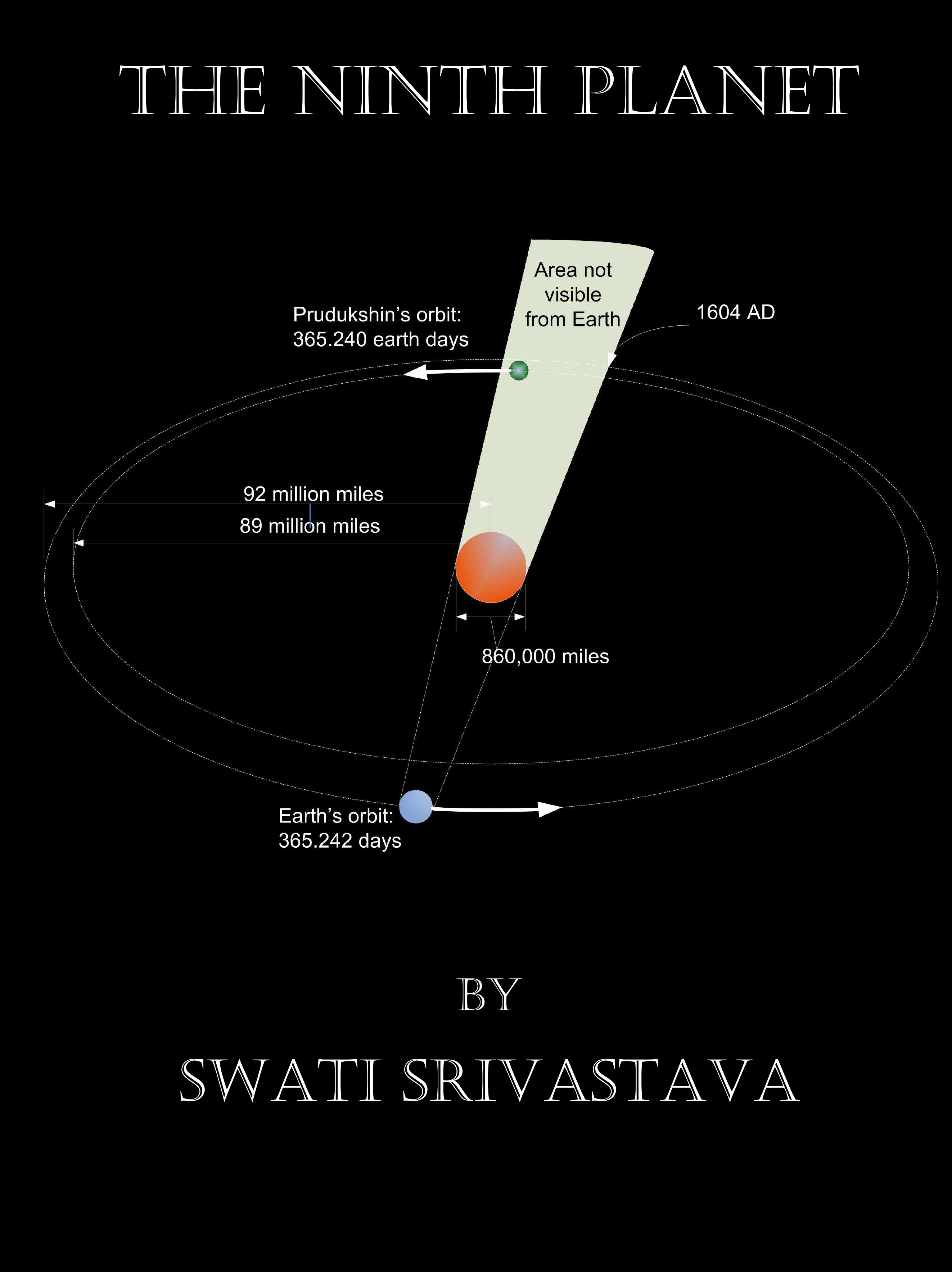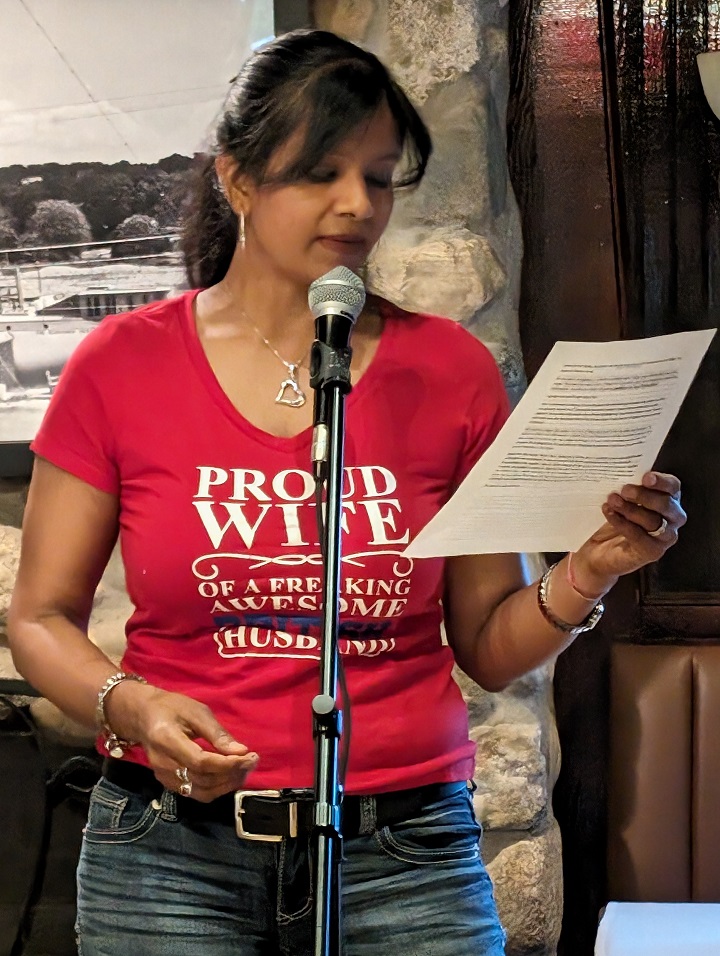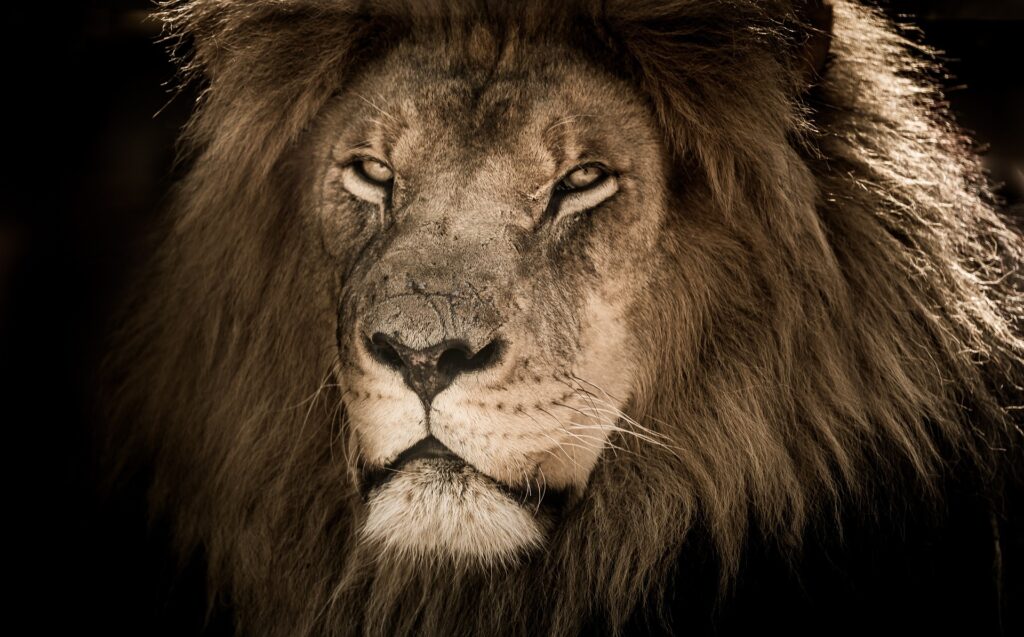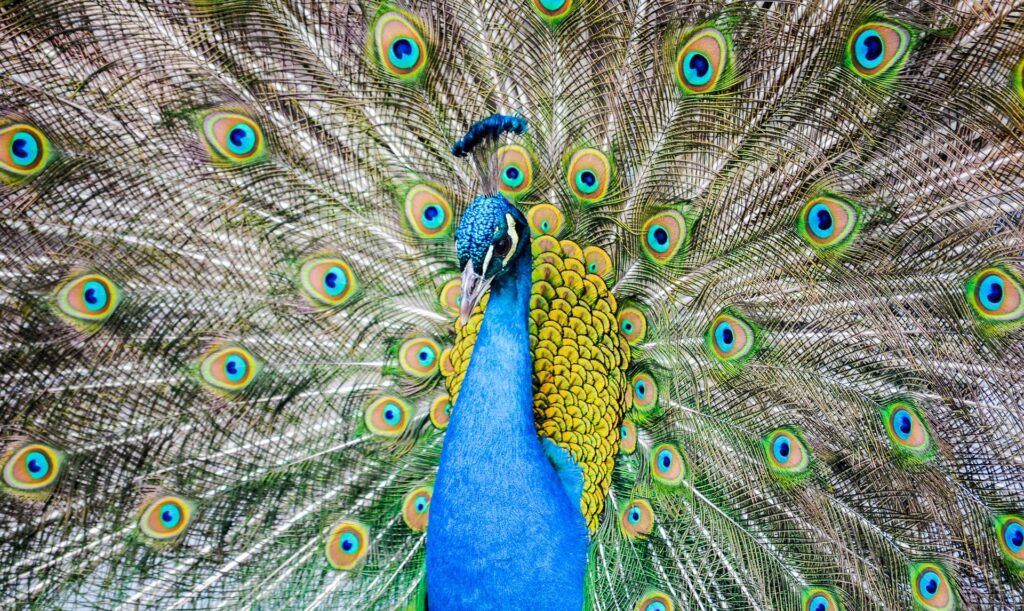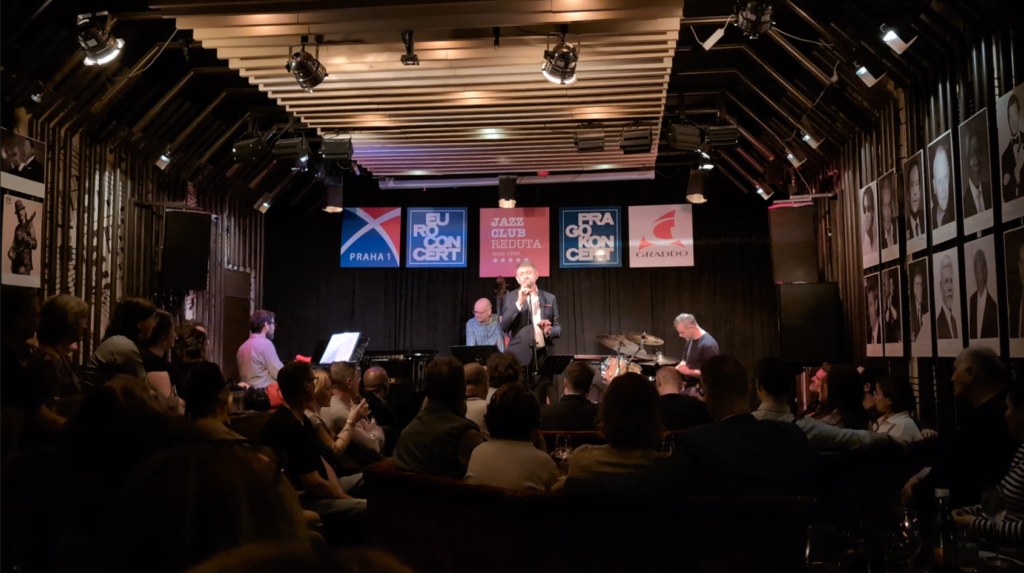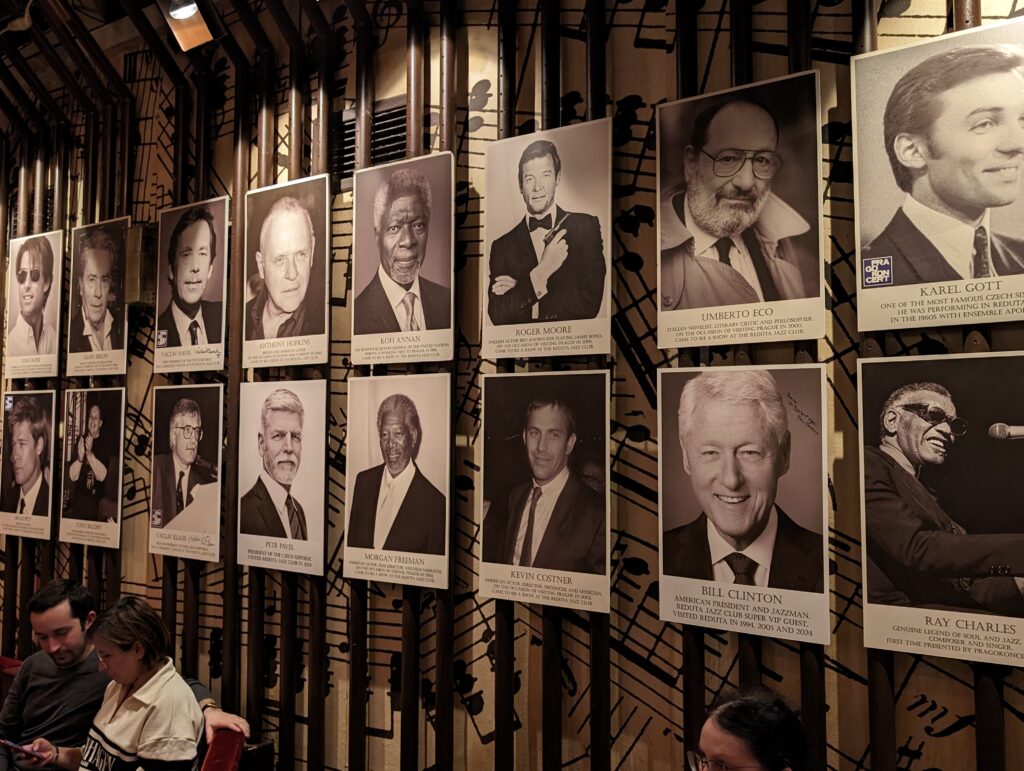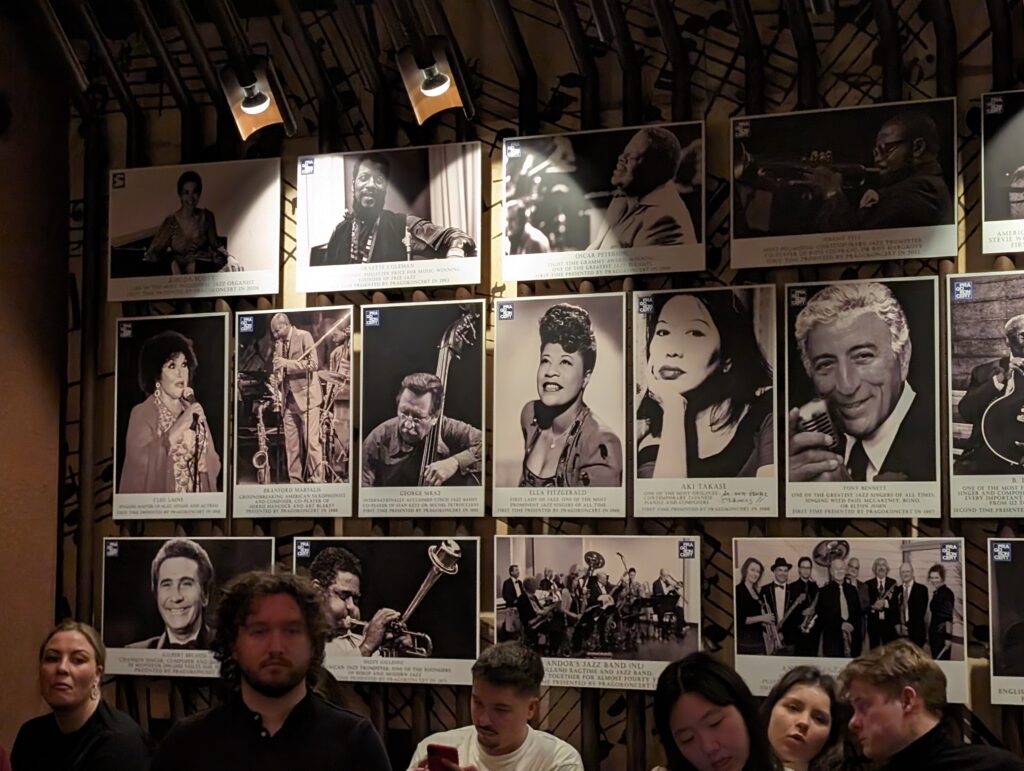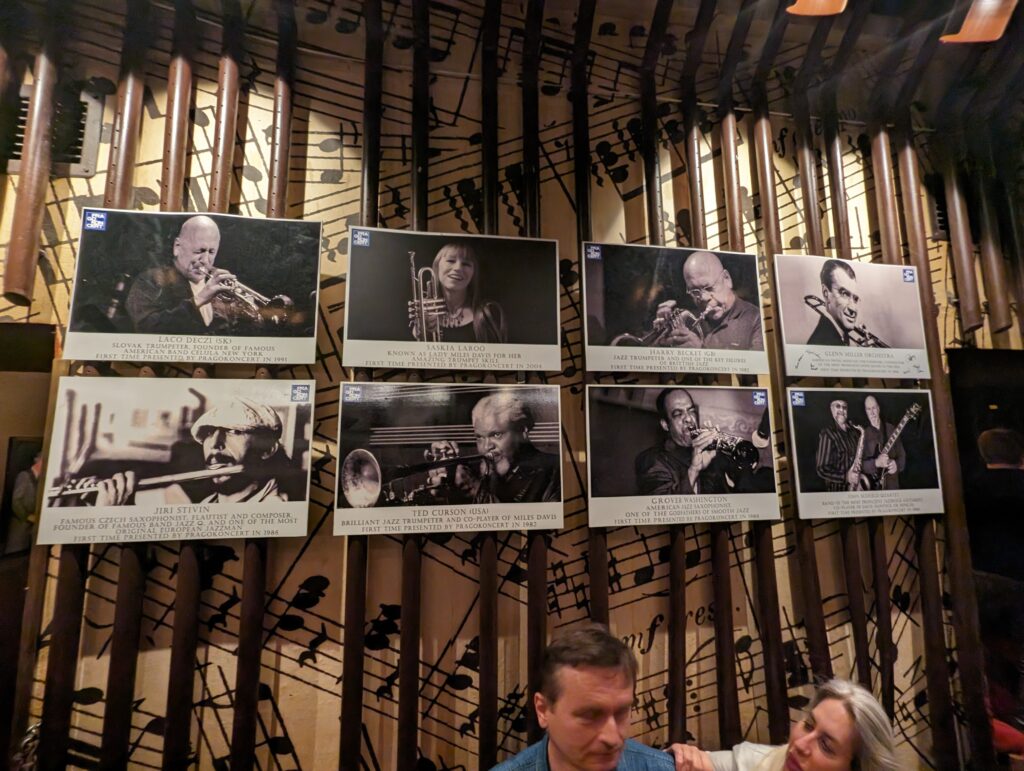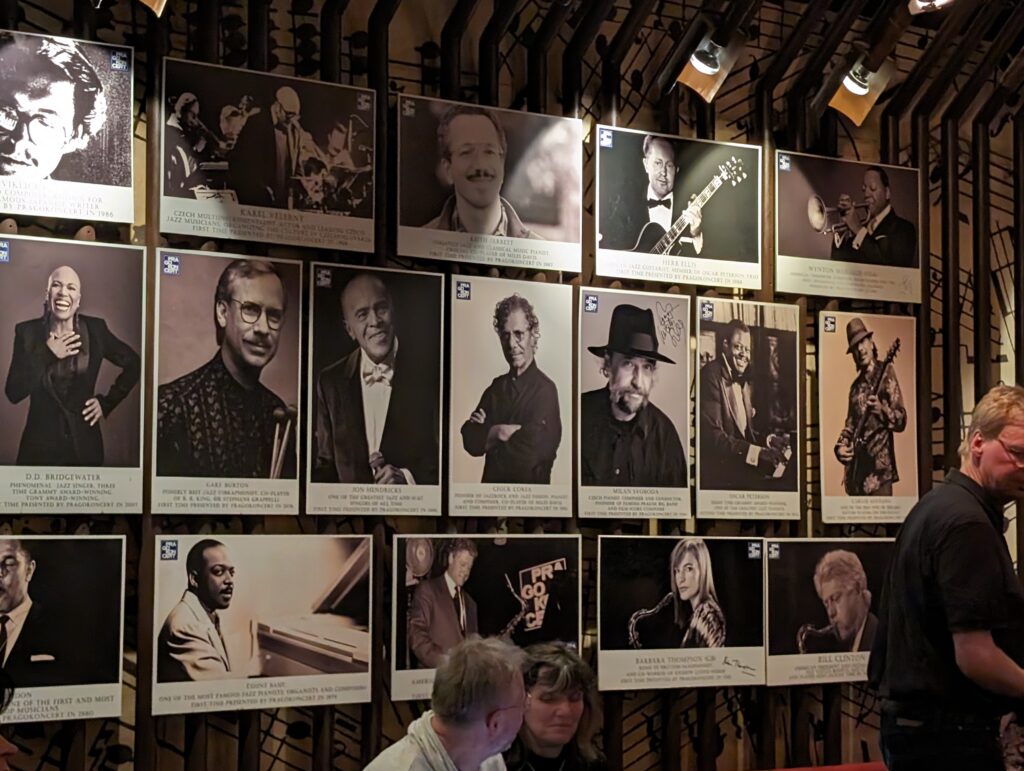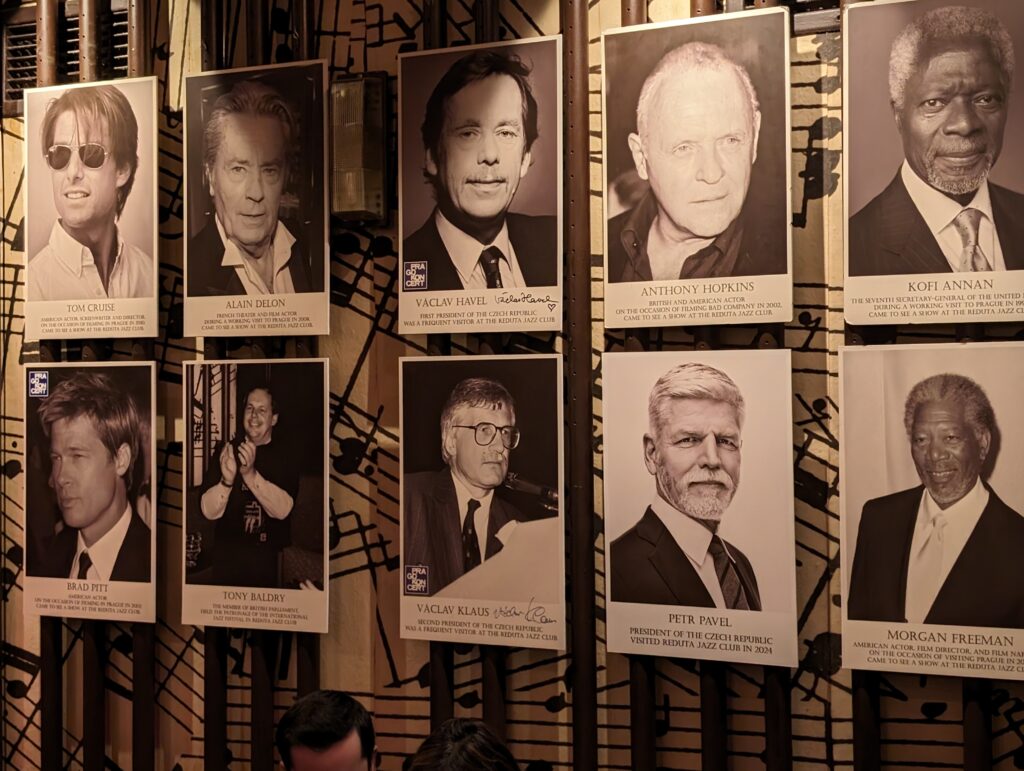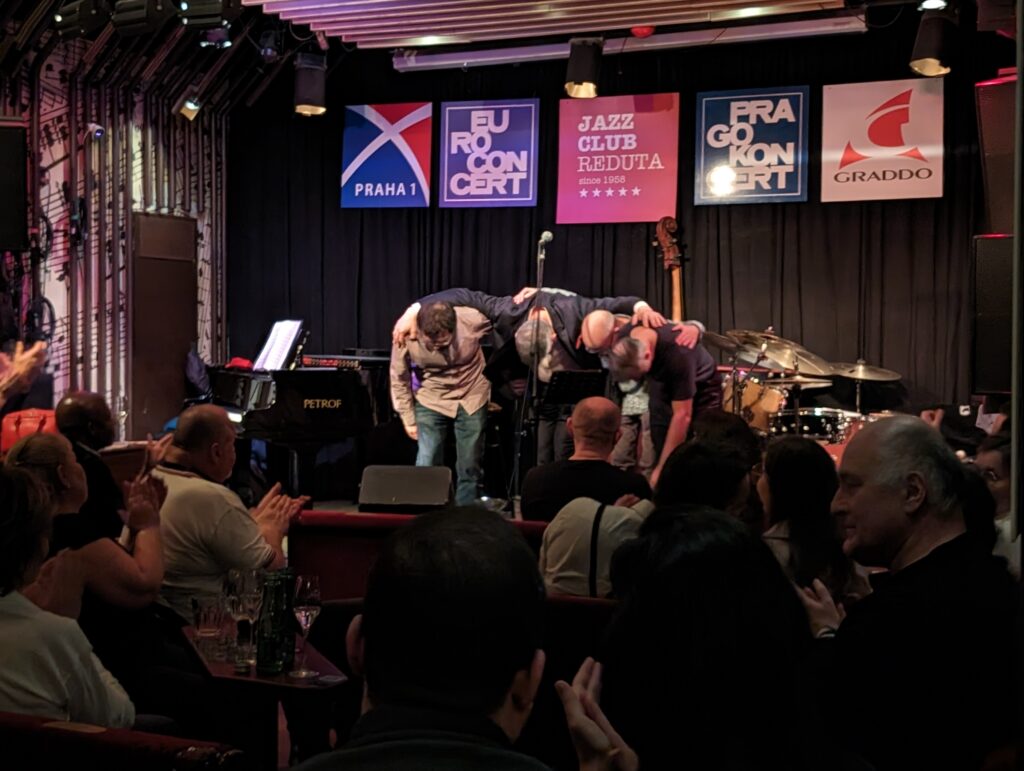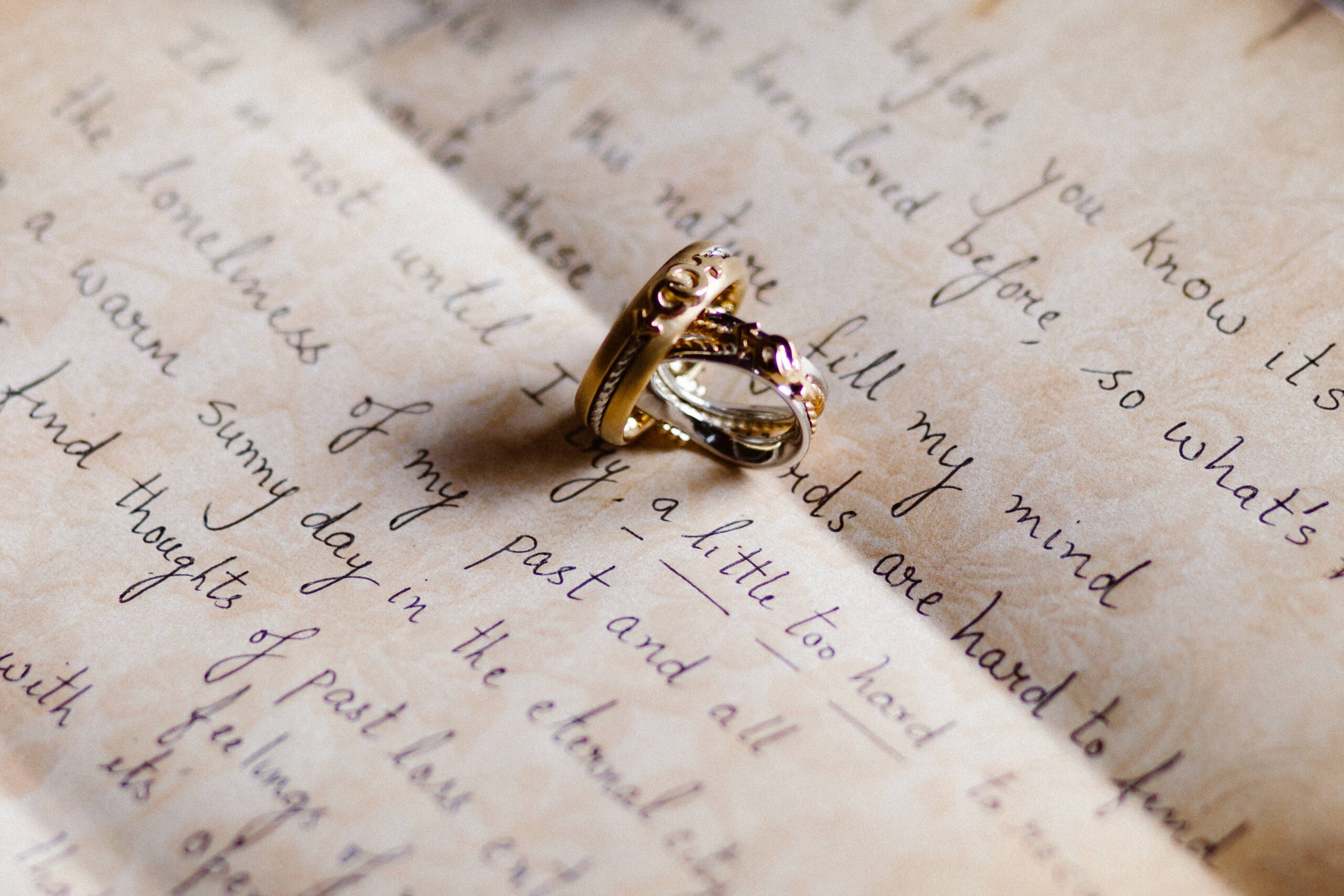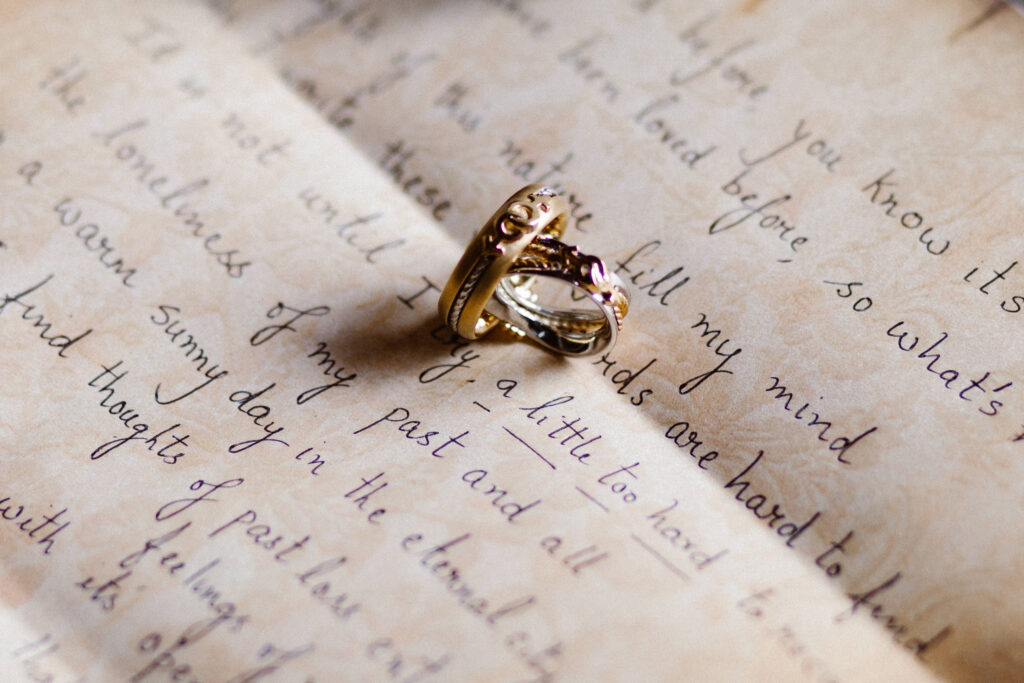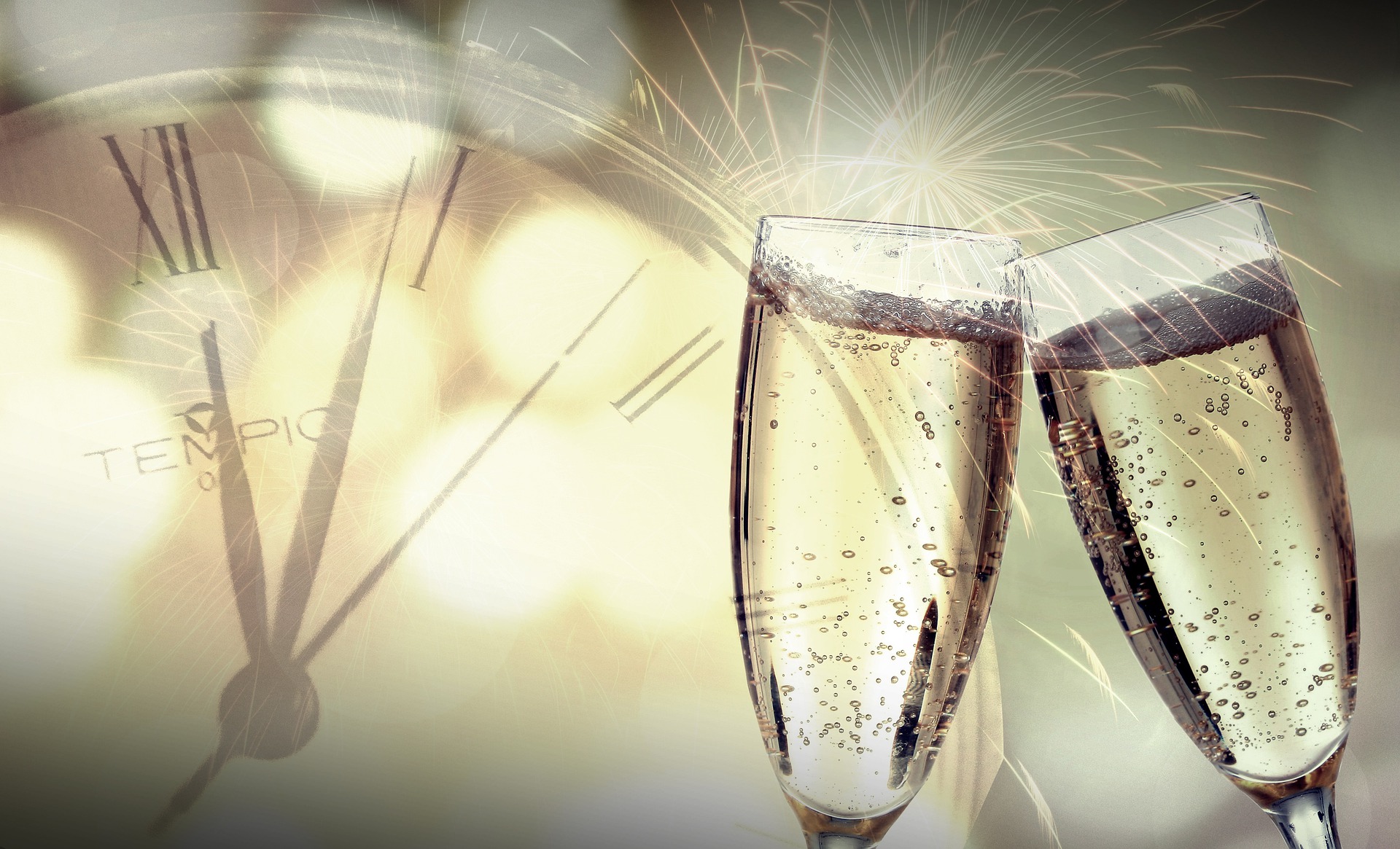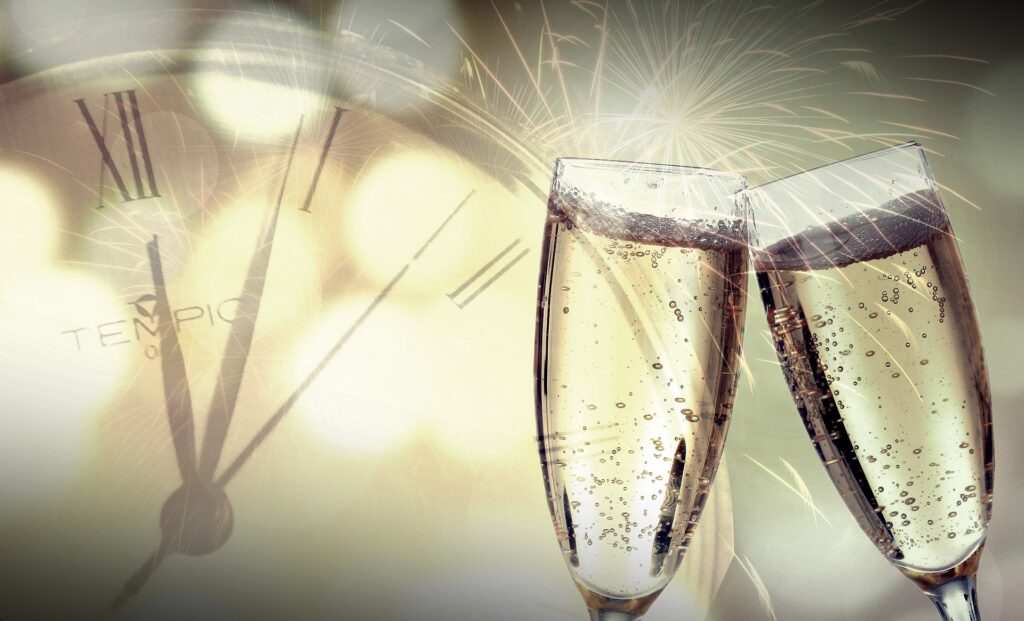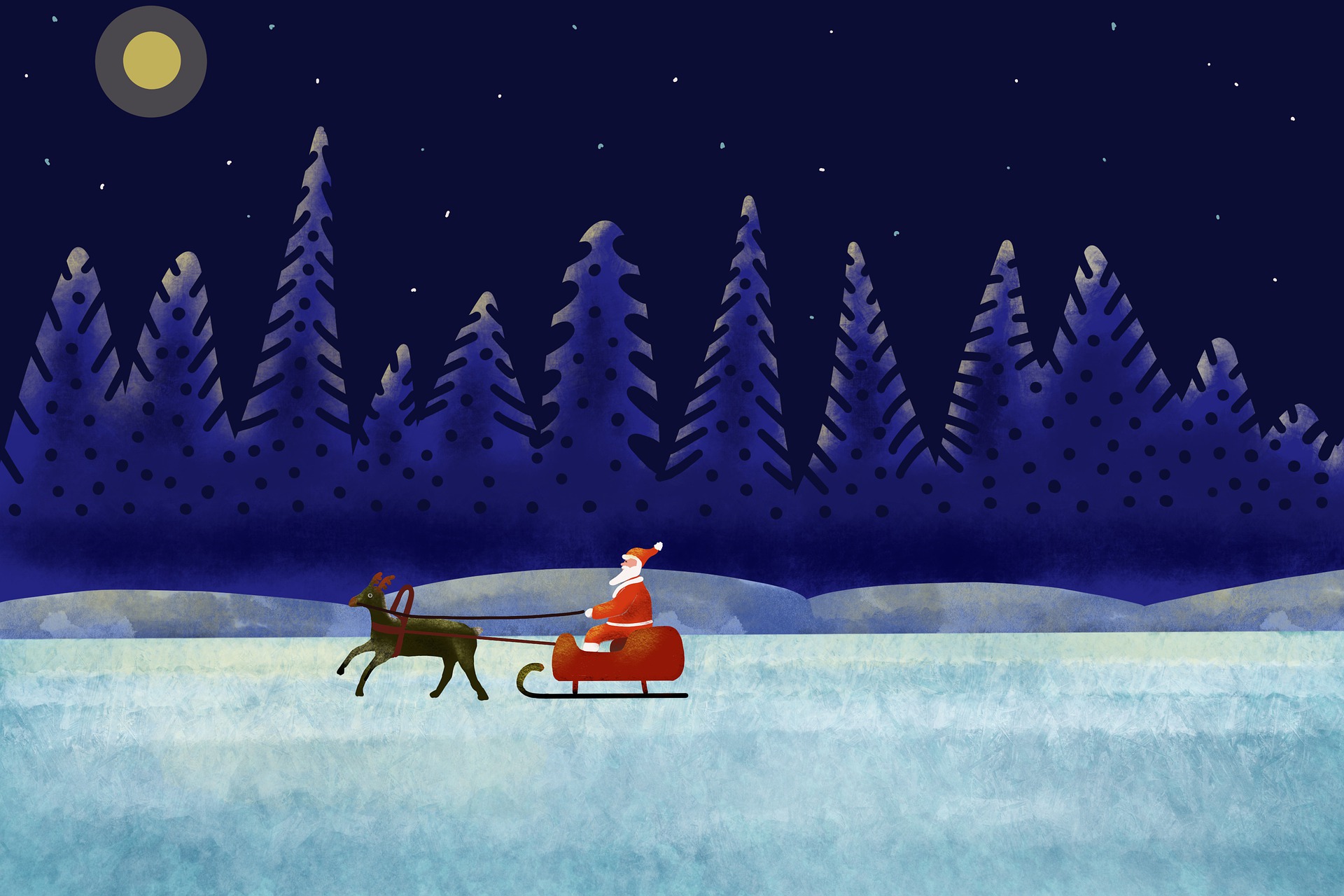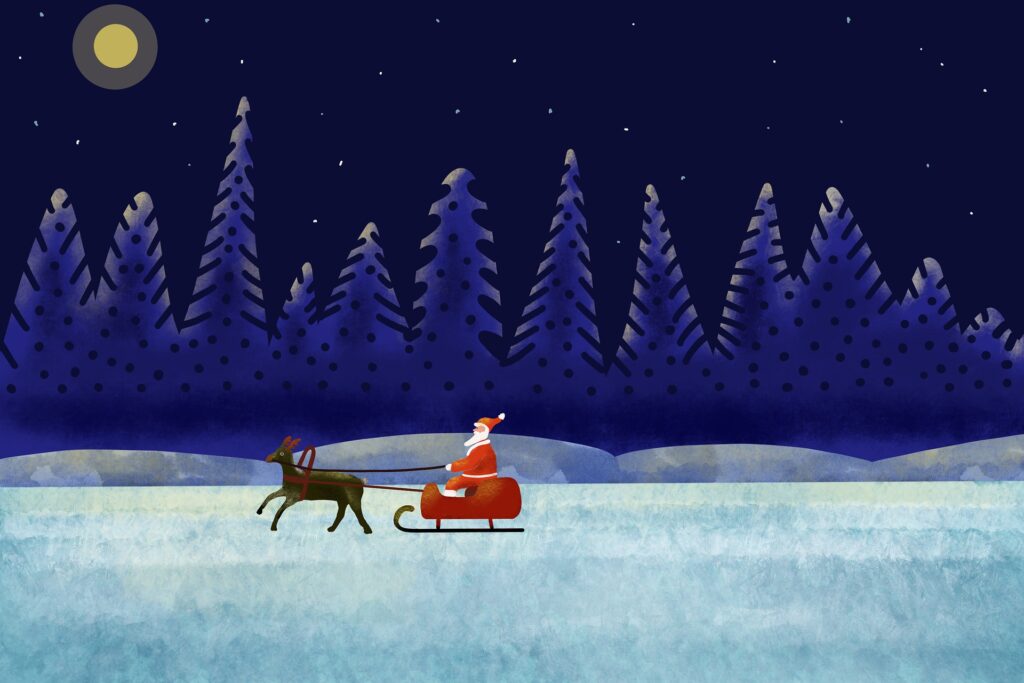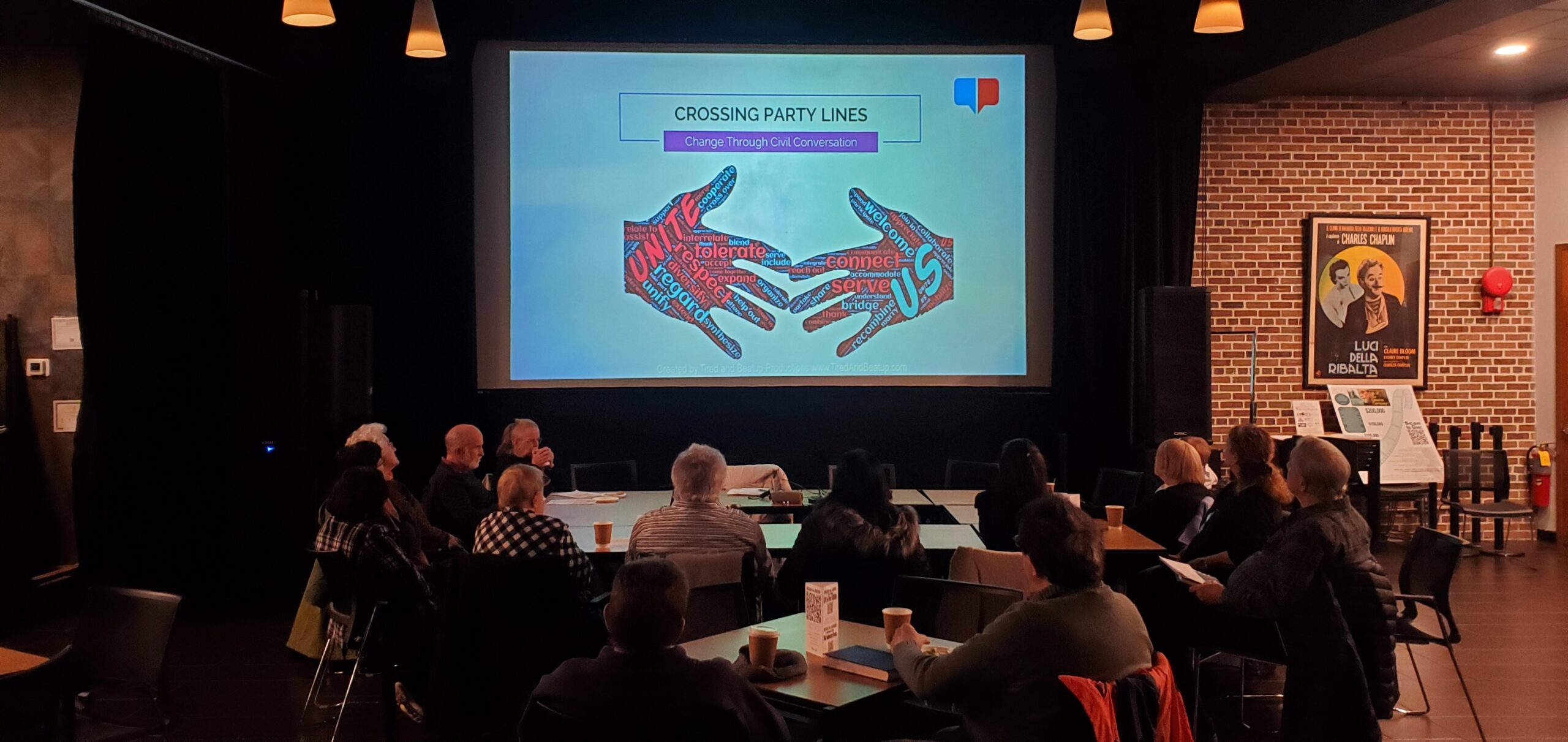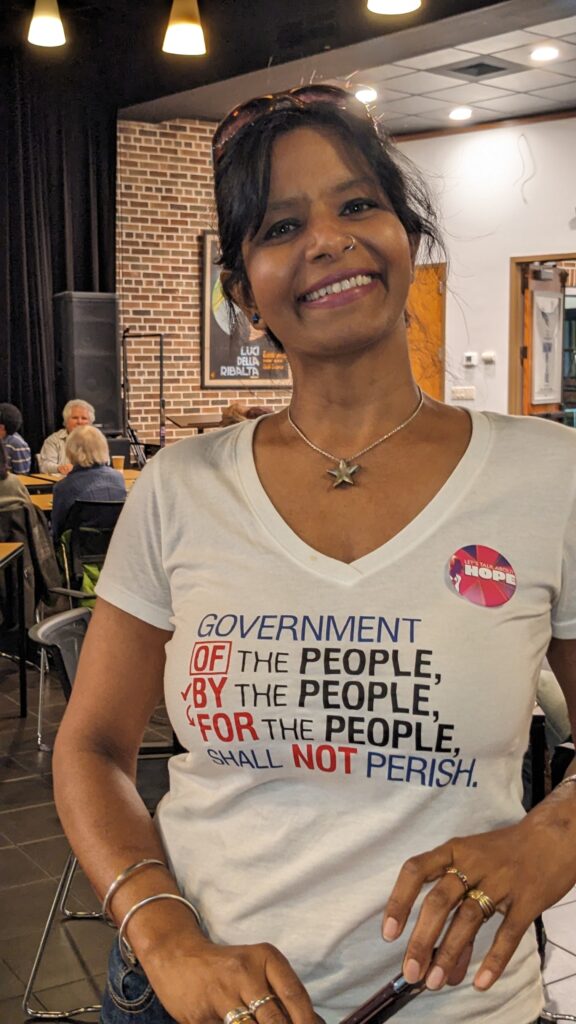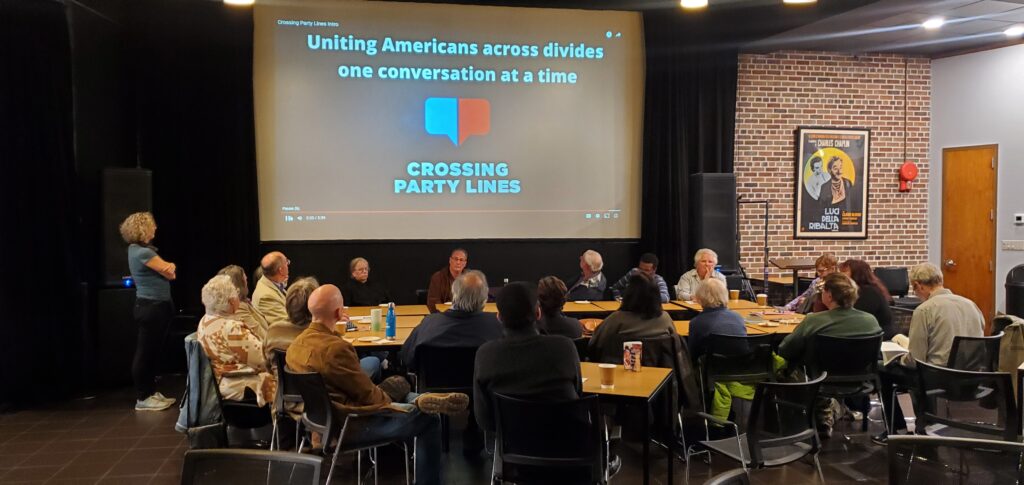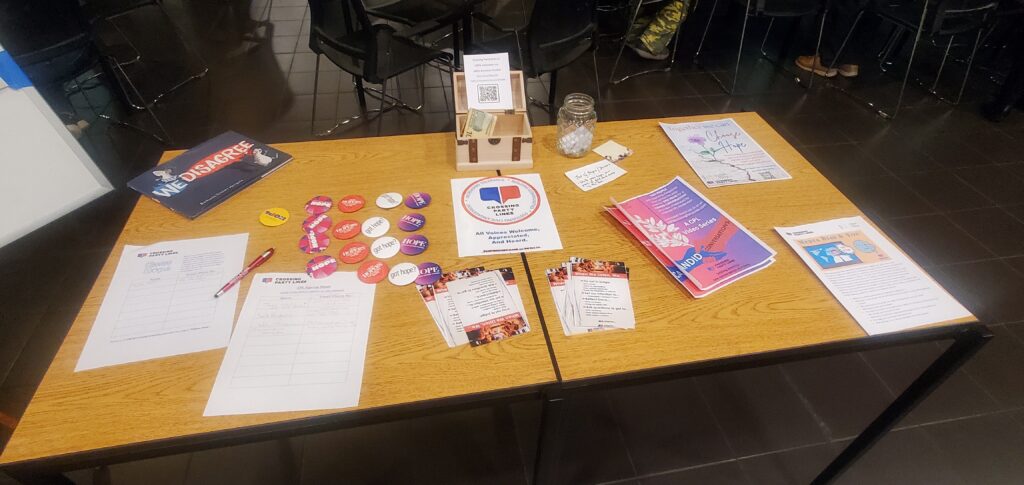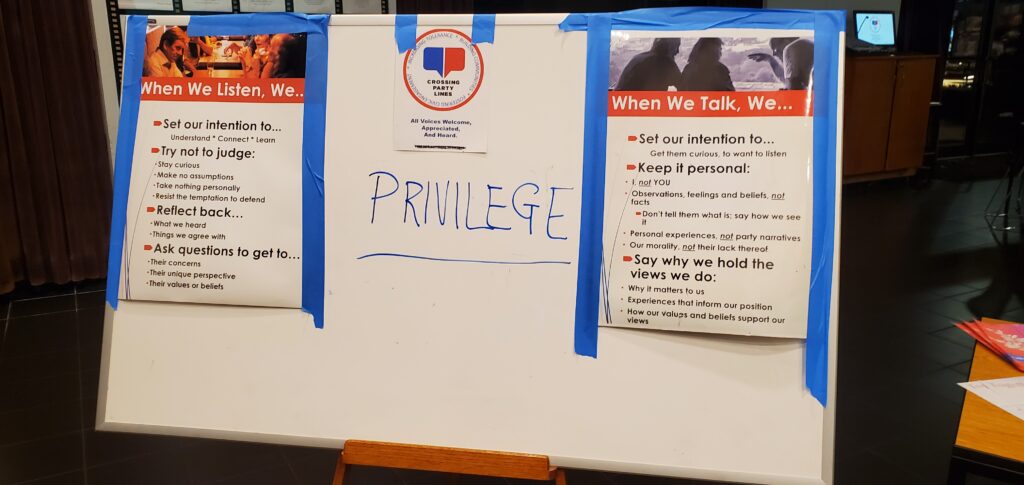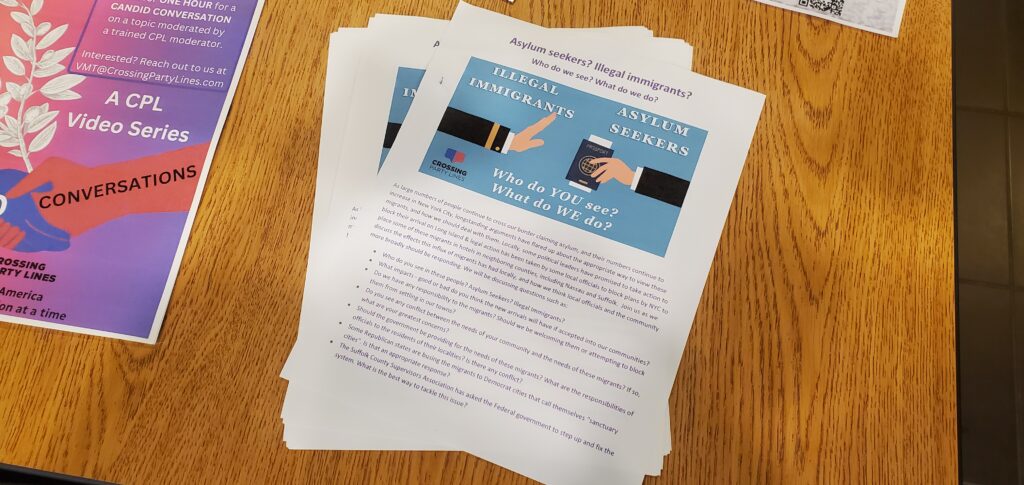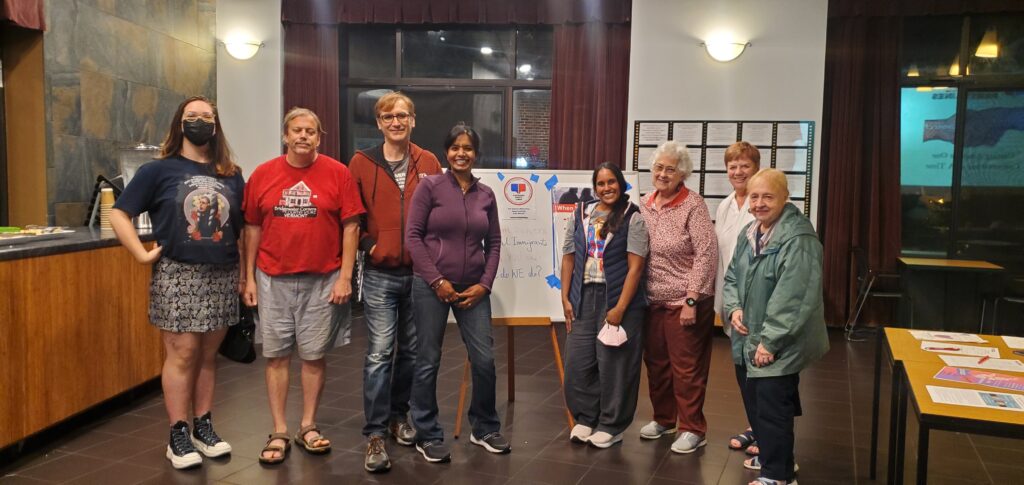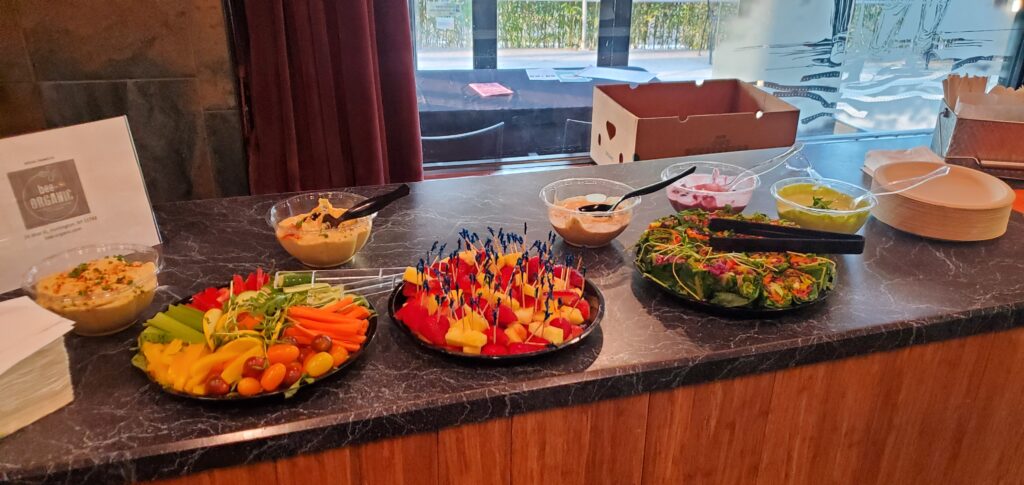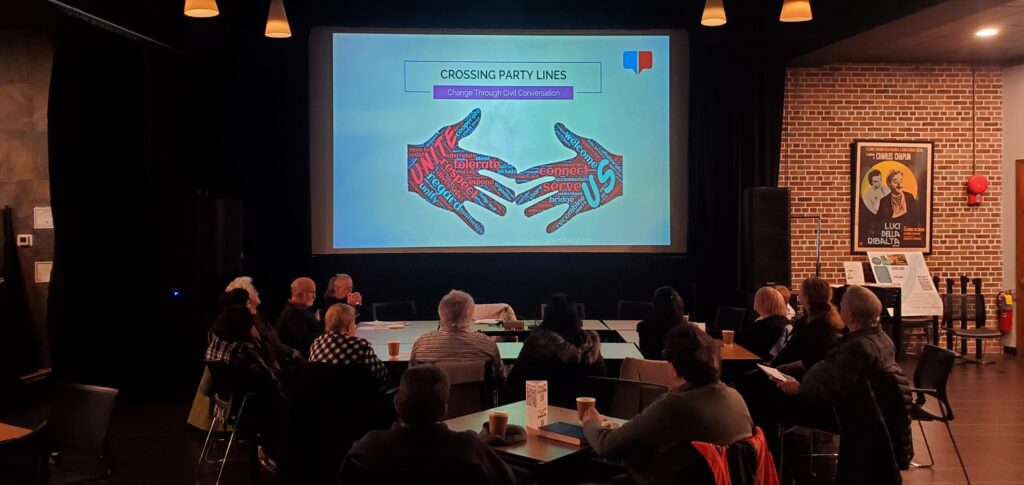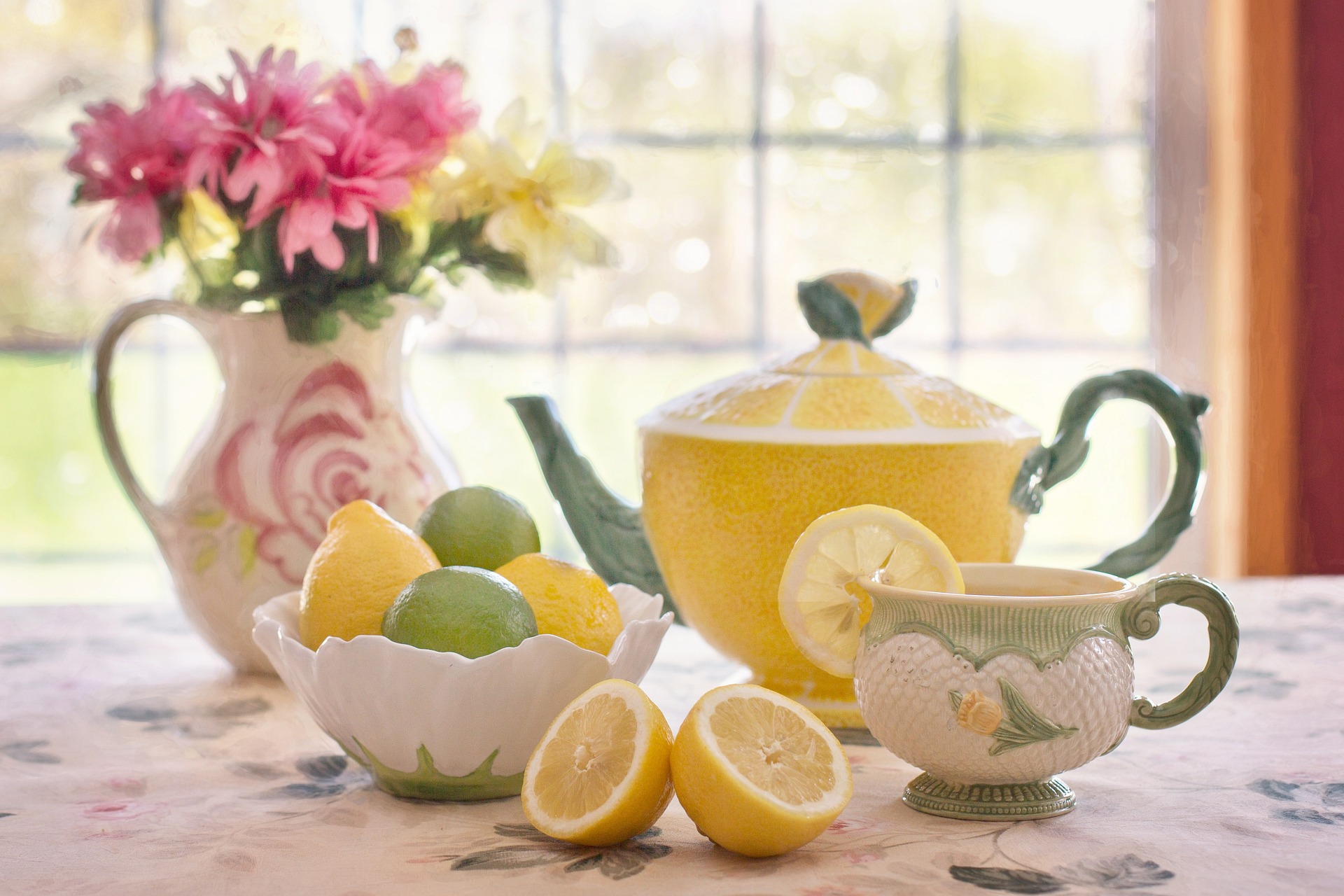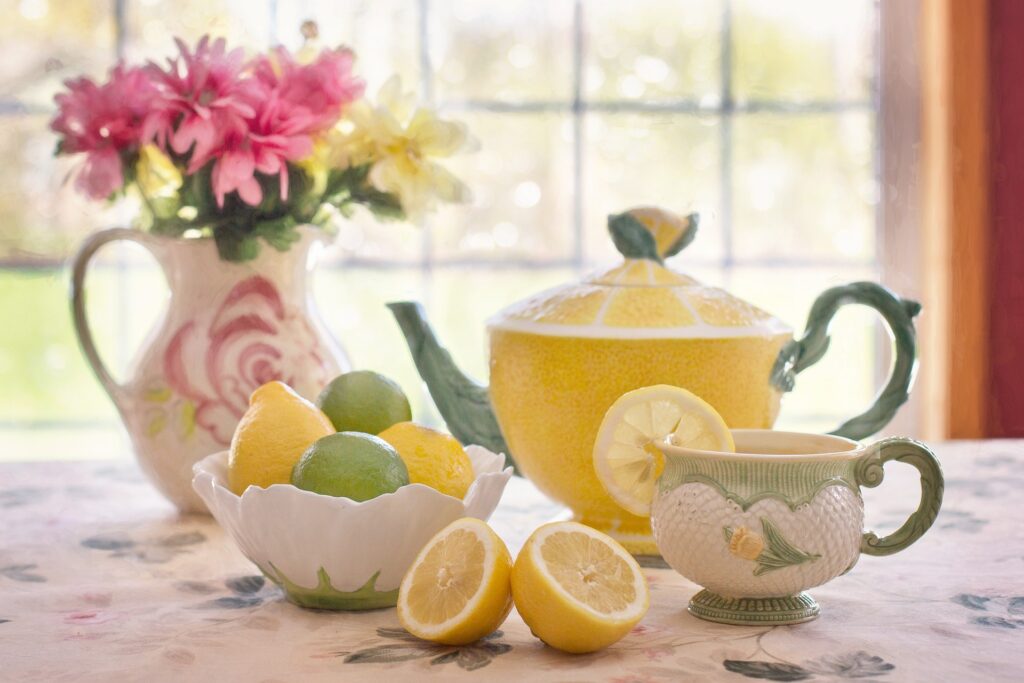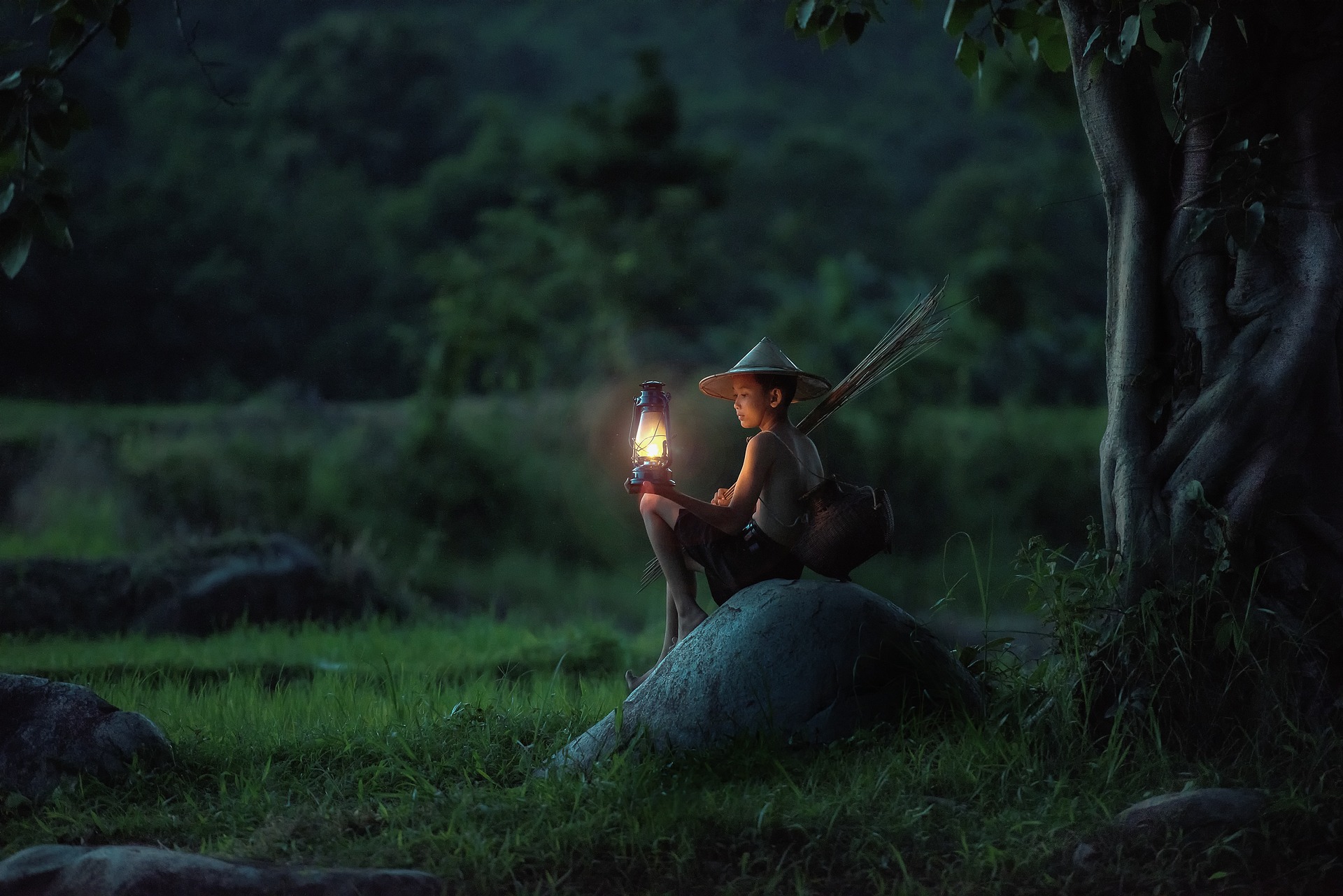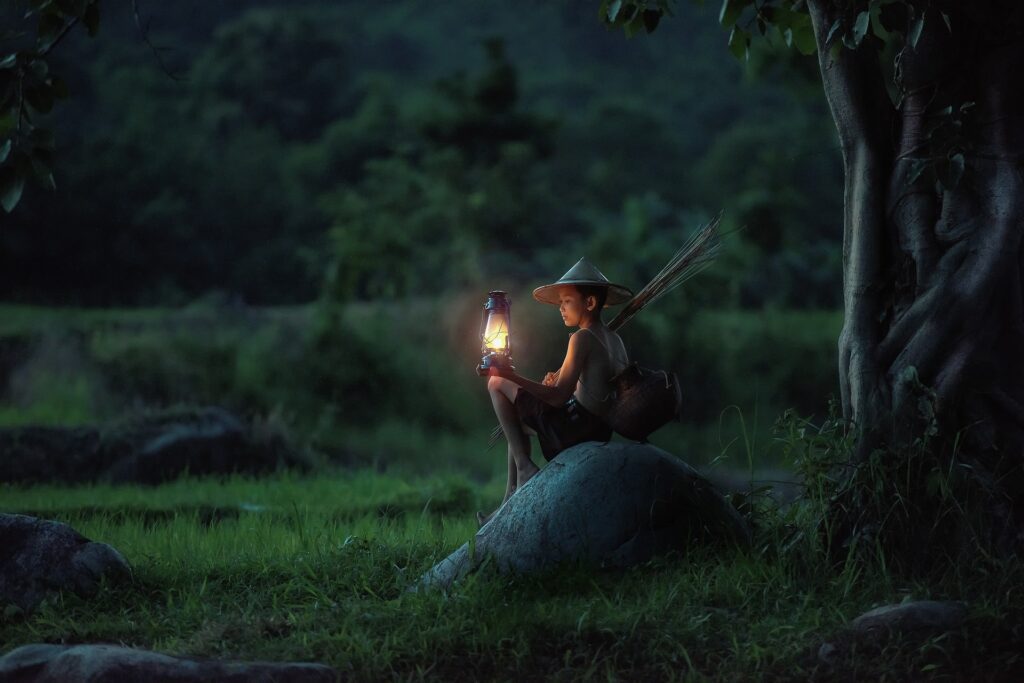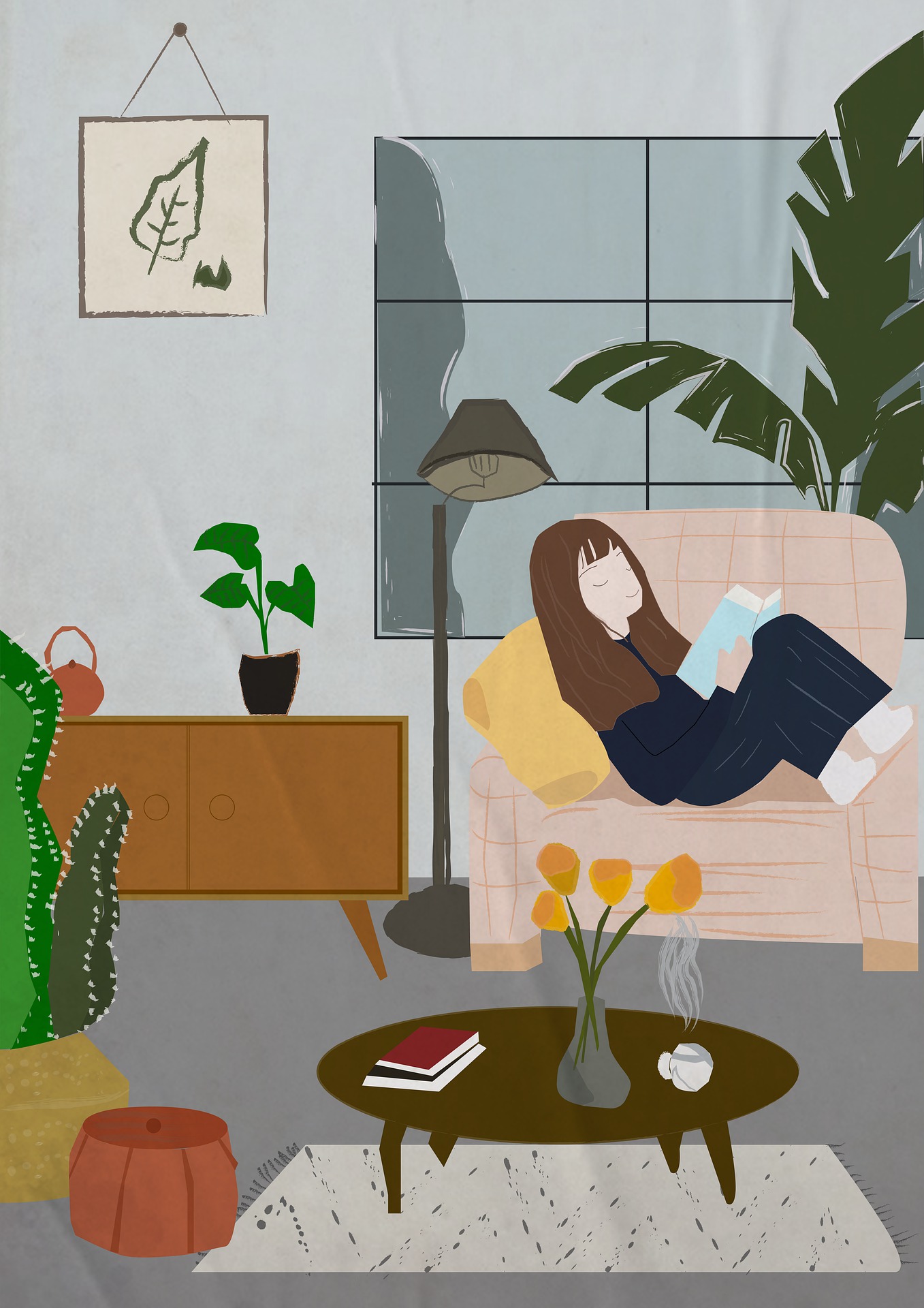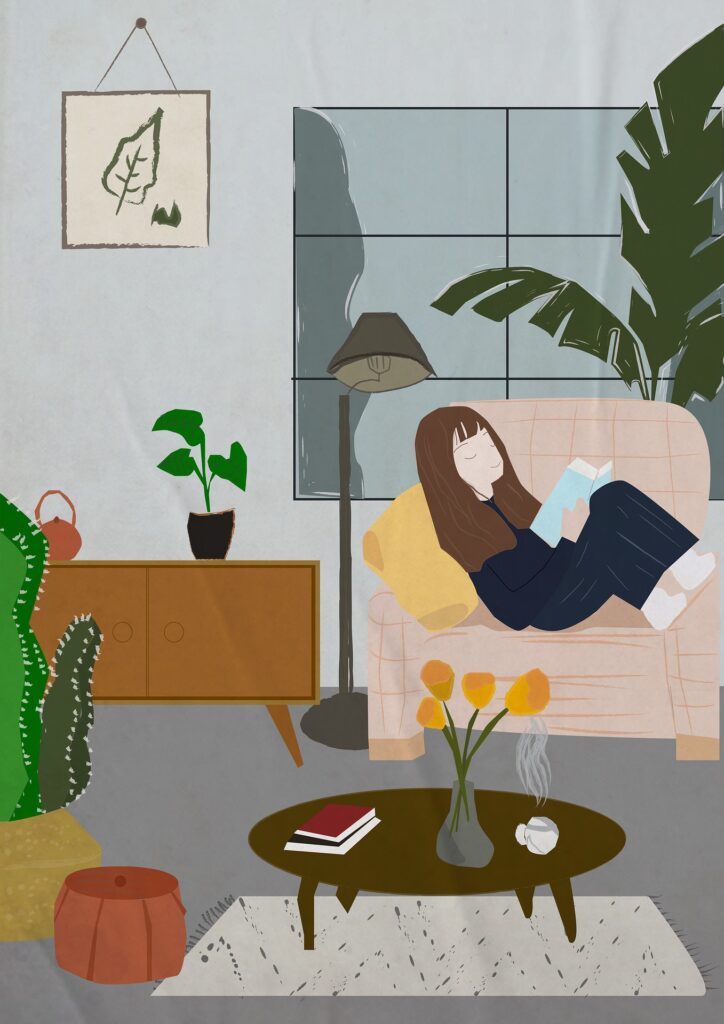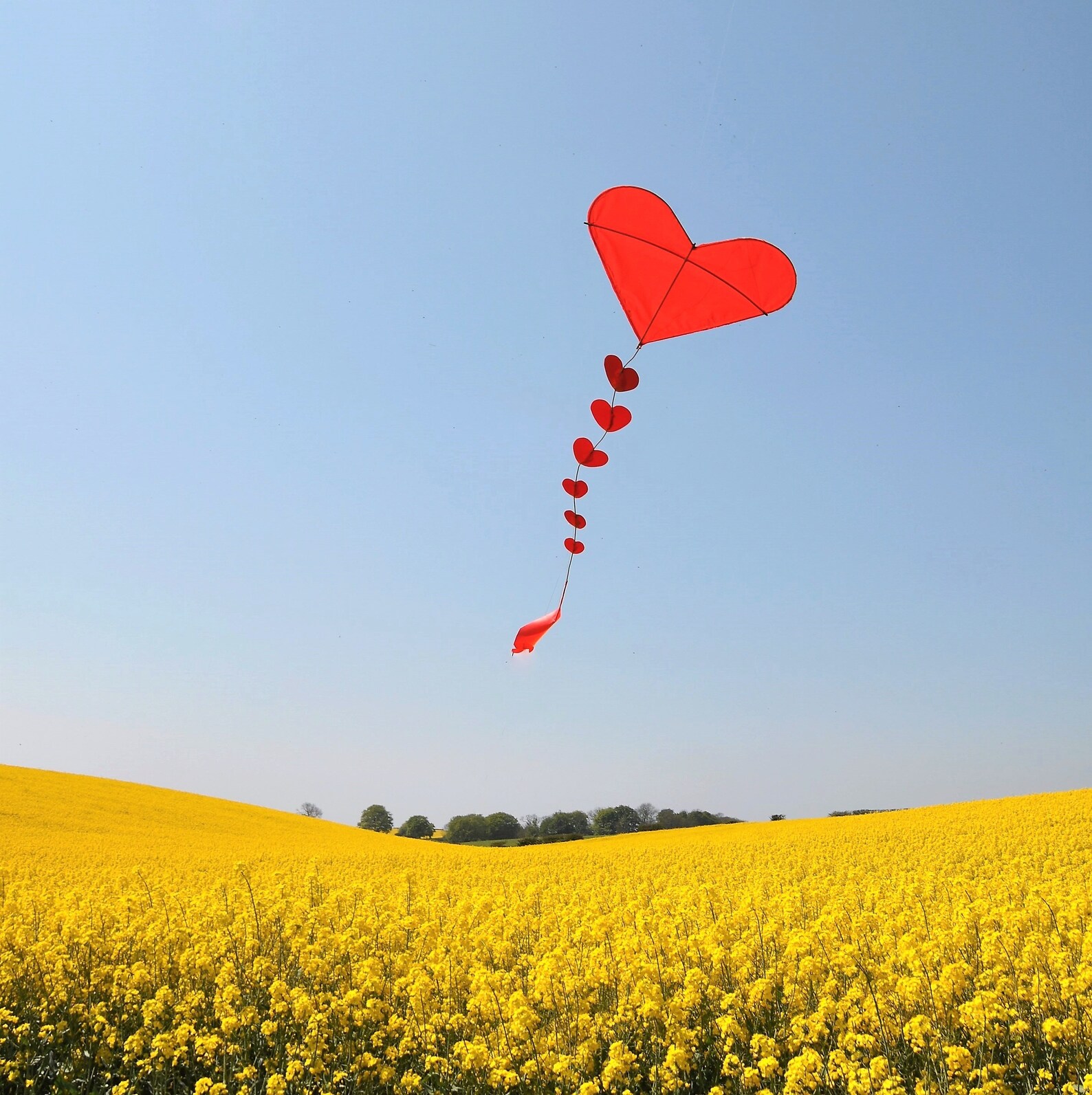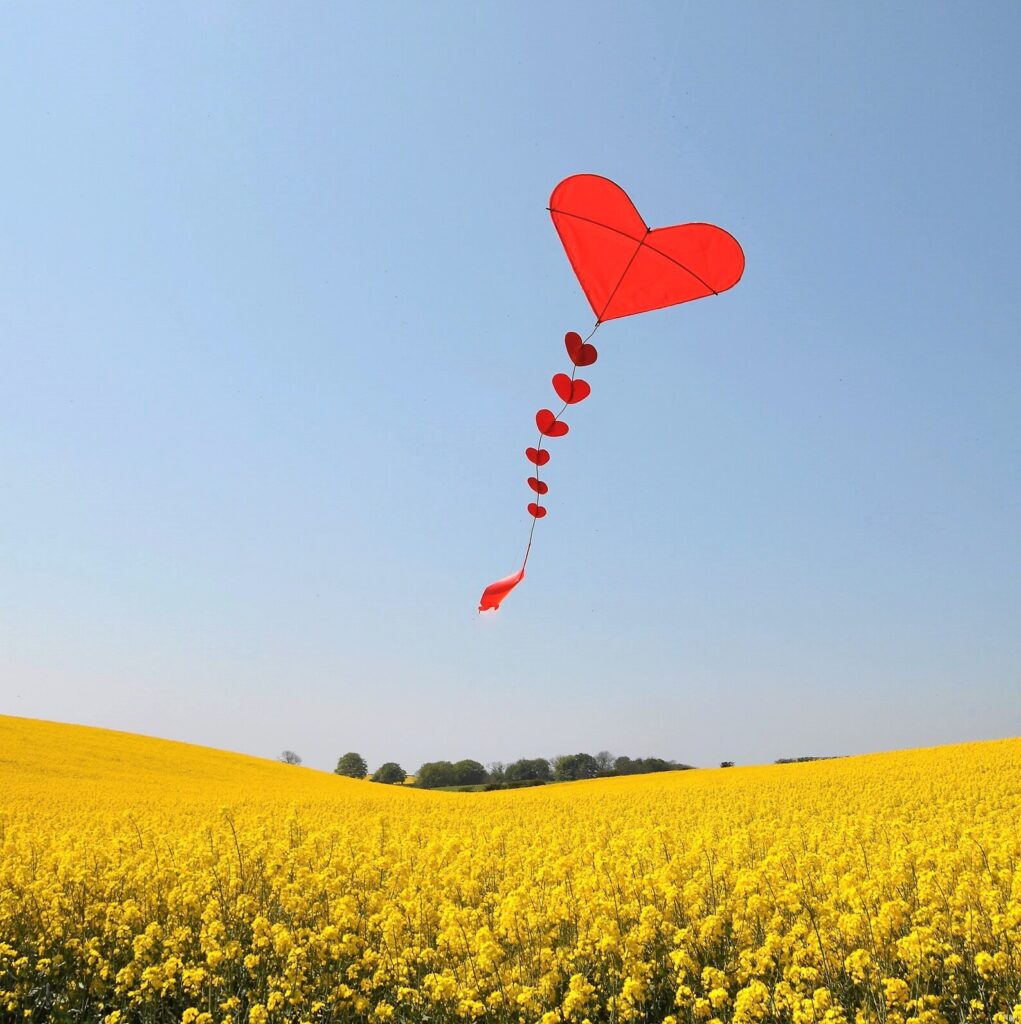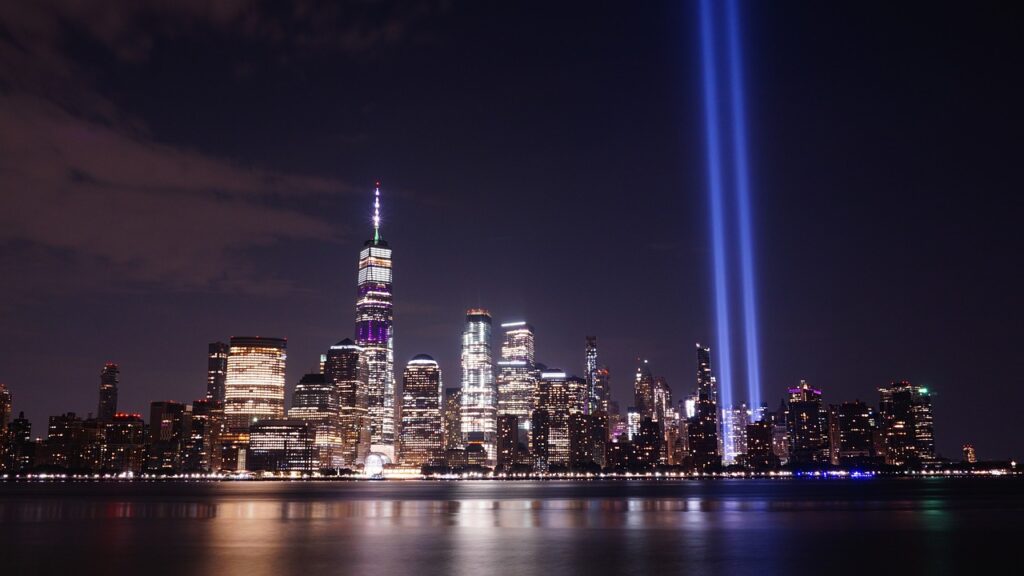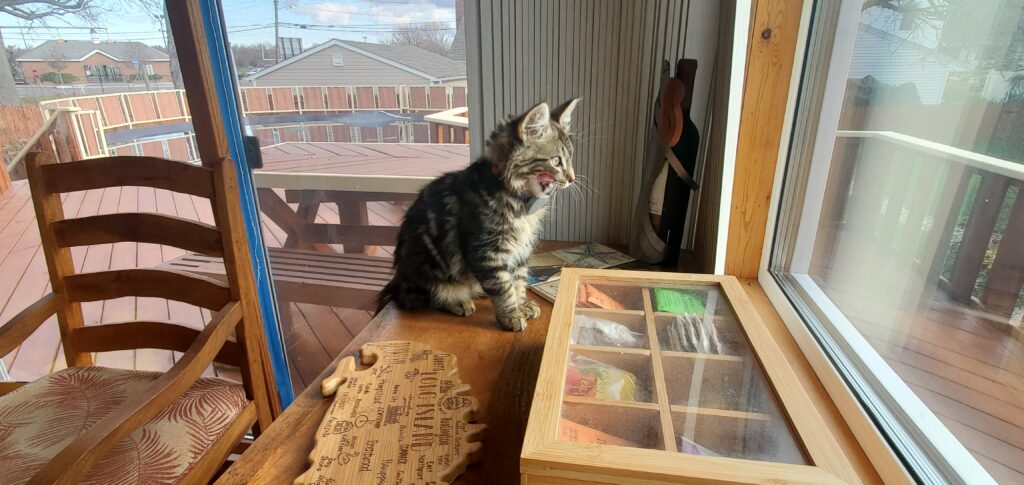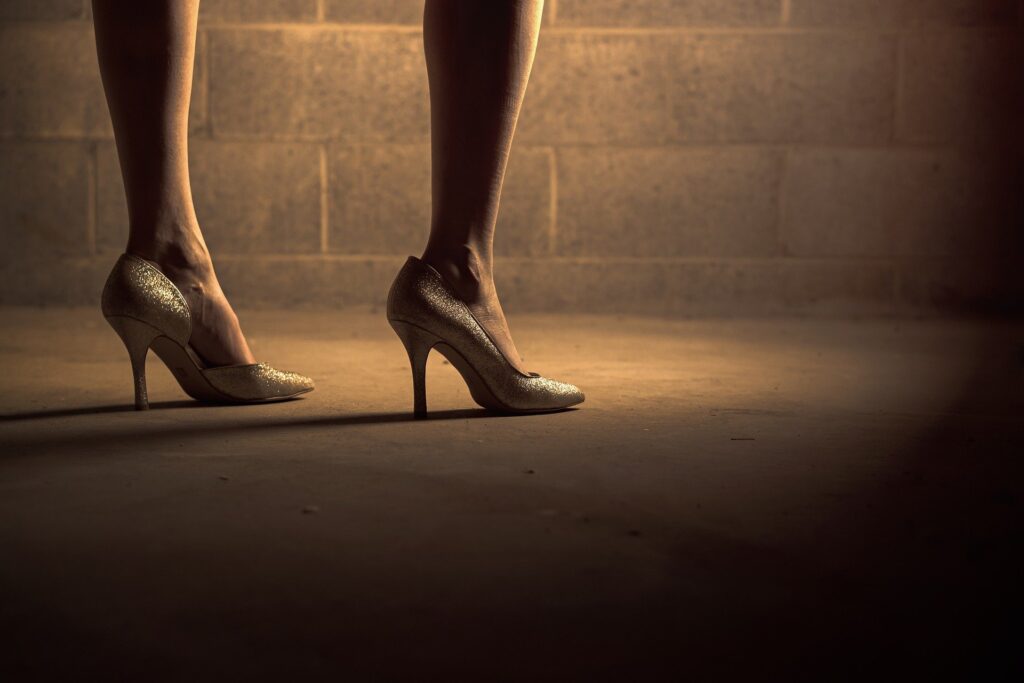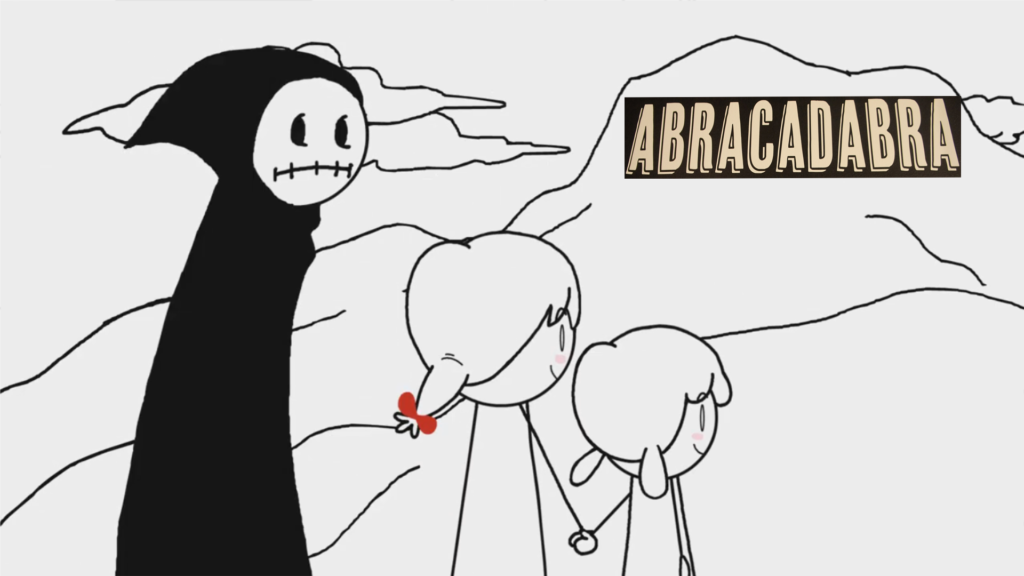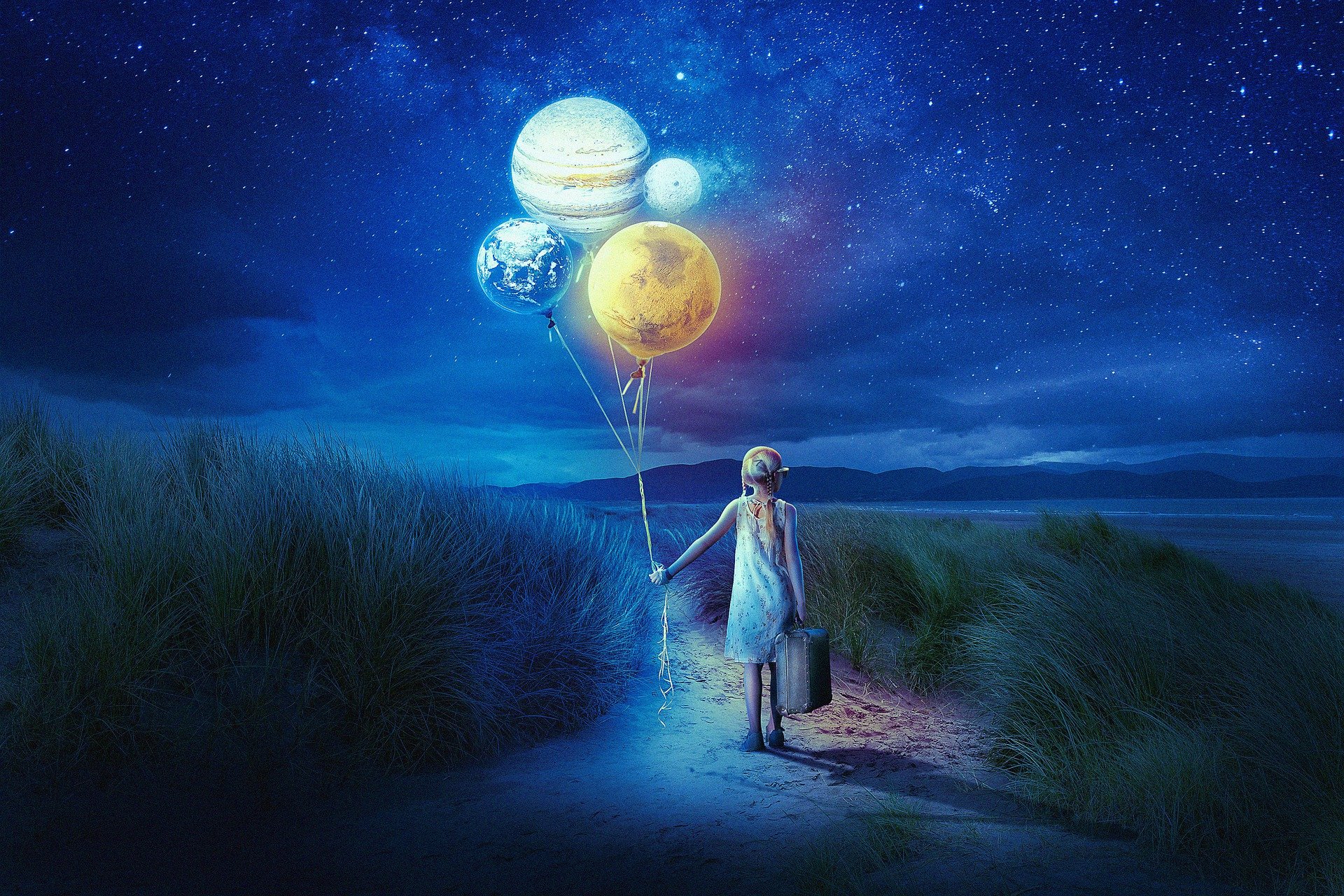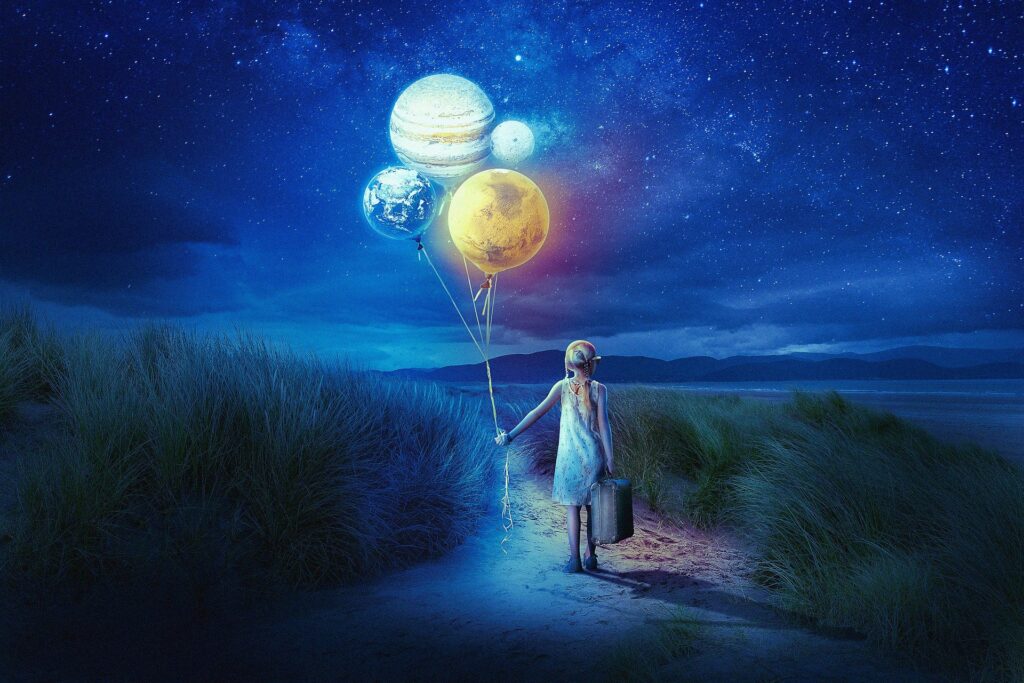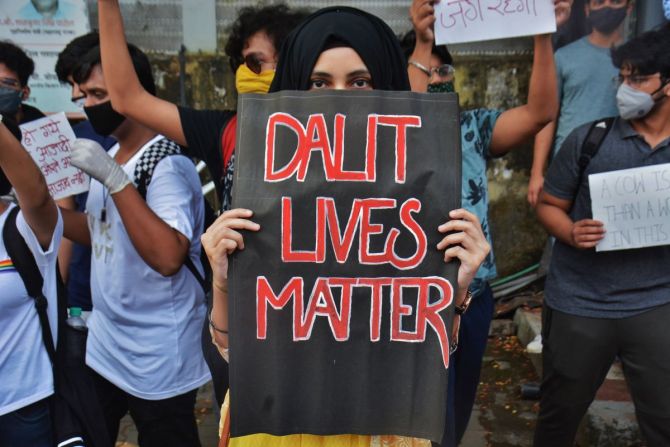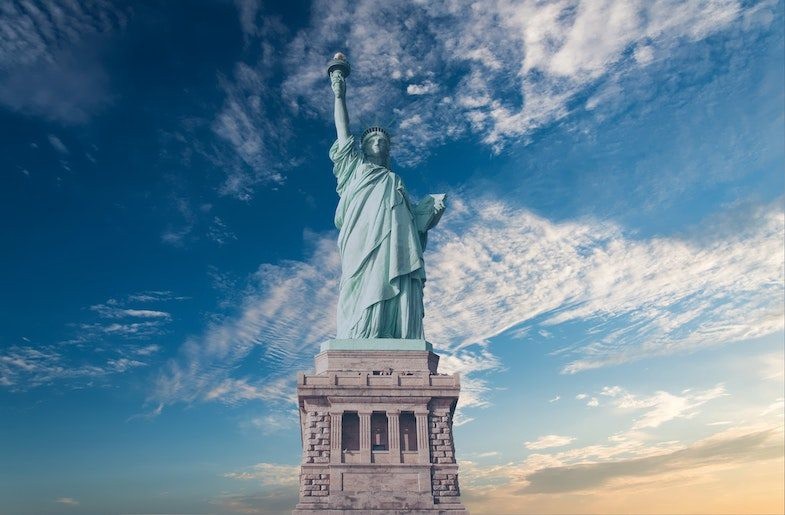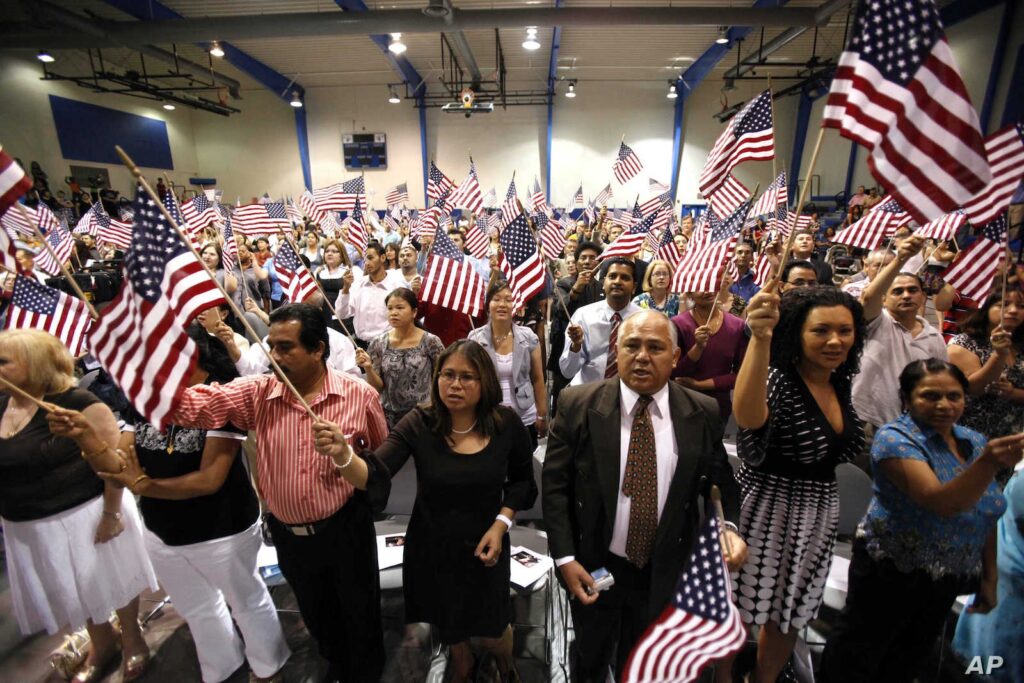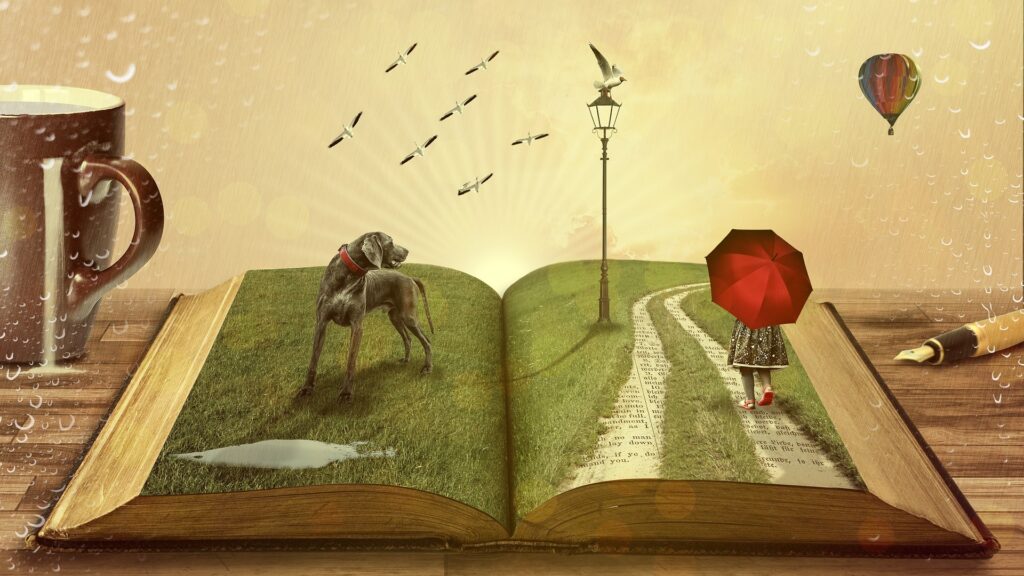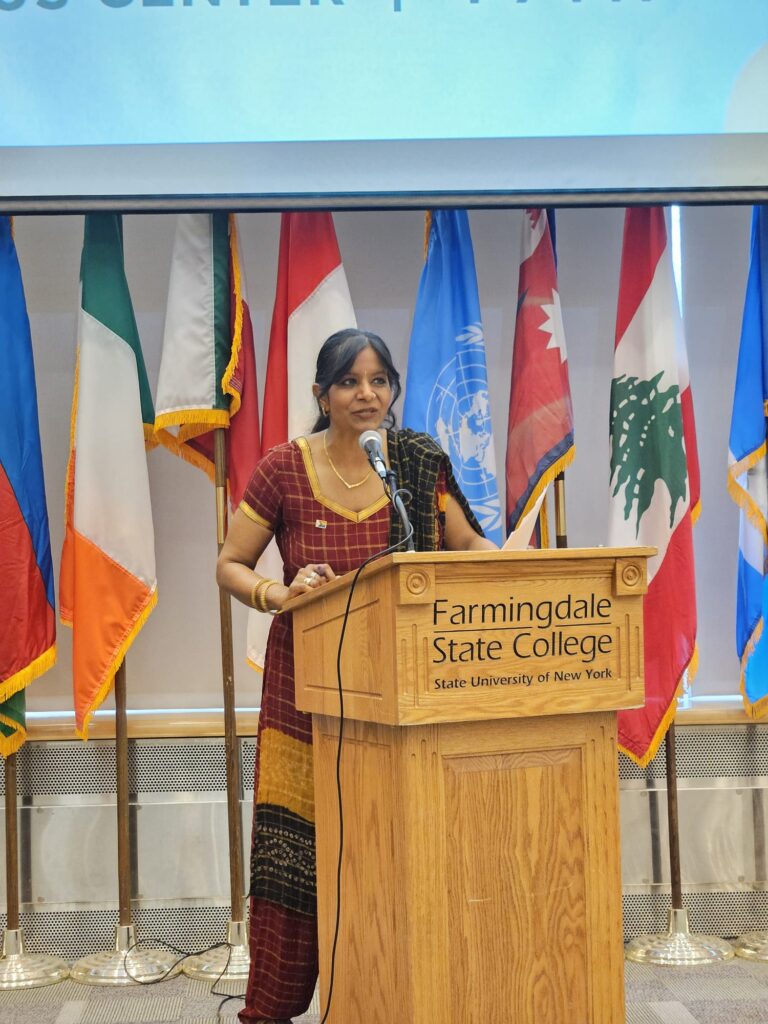
I was invited to be the Keynote speaker by Farmingdale State College Multicultural Committee at their annual gala. Following is my full keynote.
Good Evening Farmingdale State College, members of the multicultural committee, students, faculty & staff,
It is my honor to be standing among you and to share something of my journey. Thank you to the multicultural committee for this honor. Thank you especially to Ms. Sylvia Nicosia and Mr. Jon Goldstein for guiding me through the process.
My name is Swati Srivastava and I am an Indian-American immigrant, a writer-director-voiceover artist, a former woman in STEM now a woman in FILM, a software engineer turned filmmaker, an Indian woman married to a European man. In other words I am someone who has learned to make her home in that little tiny “dash” – which is the symbol of a hyphenate identity, something many or perhaps most of us in this room also may call home.
As I was drafting this keynote, I happen to come across an old saying.
“It is said that in the final conclusion only these three remain: Faith, Hope and Love.”
And I thought that is a good theme for me to address in these times. Being a writer-director I communicate best through story. So I will be sharing 3 stories today on this theme that I think would of value to this community.
My first story is one that I wrote a couple years ago, on the 20th anniversary of 9/11; the day of the terrorist attacks on the United States. It is called “Go back to your country”.
Here it goes..
—
“Go back to your f***ing country” — the words hit me like ice-cold water. I stared unblinkingly at the speaker, unable to process the words directed at me. My face still wore the awkward smile it had when I had rolled down my window to better understand what the passengers in the car next to mine were emphatically trying to tell me. We were stuck in bumper-to-bumper traffic on the Hackensack River Bridge, New Jersey, just a few miles from the gaping hole and smoldering embers of what used to be the Twin Towers. It was Sept 14th 2001.
I have never understood why when I need them the most; all my witty repartees vanish like a fart in the wind! I am a writer for God’s sake; I should know how to be funny in the face of first degree insult! Nope, never happens. Instead I stared at the 5 Caucasian teenagers — 3 boys and 2 girls gesticulating at me as if I couldn’t comprehend their verbal bullets. They seem to take this as further proof of my being a foreigner who didn’t understand English, so they did what any smart person ought to do — shout louder at me! “Go back to your country!”
I remember feeling pissed and horrified and ashamed all at once. I remember my mind racing with several logical replies — “You morons, I am Indian, and no Indians were involved in the heinous attack last week” and “I worked my ass off to earn the privilege of living in this country and all you had to do to earn the privilege of shouting at me was to be born here” and “I am with you in this, I feel your pain too.” But, none of the aforementioned thoughts took shape in my mouth.
Instead all I did was quietly roll up my window. “They are just kids, and they are hurting for their country,” I thought. I could hear them still shouting at me — their entire rage directed towards one small brown woman, who looked like she might belong to a geographical area close to where the terrorists originated from. “I promise I will do as you say if you could just point out my country or the one you are so pissed with on a freaking map!”, I muttered to myself. Besides, how could they know where I was from — for all they knew I was born & raised in friggin’ Hackensack! I breathed deep and tried to tune out their clamor, forcing myself to look ahead, blinking away tears that had formed in my eyes for then unknown reasons.
I had arrived at JFK in the year 2000 on a bright April morning, a wide-eyed young woman on a decidedly one-way ticket, with a heart full of hope and a head full of impossible dreams. I believed, like so many immigrants do, that I was going to find my destiny in America. When I arrived at the immigration desk, the officer checked my documents, flashed a big smile at me and said “Welcome to America!” I will never forget how warm those words made me feel inside…ok, the dude was really handsome, so that may have something to do with it too! But it’s not the entire reason, promise! It really means something when the first person you interact with at the border treats you as a welcome immigrant, it validates the story of America; one that is broadcast on a loudspeaker by the Hollywood dream factory to the world, that America was made by the sweat & toil of immigrants, that it is a country of, by and for the immigrants, so hey you, keep coming to America!
Sept 11th changed all that. Almost overnight, I saw the mood shift and darken. People’s personal boundaries hardened. The rules for acquiring and renewing visas became tighter and more tedious. Potential immigrants became potential terrorists. Borders started turning into walls. Welcoming America became Fortress America.
I finally received my US citizenship three years ago — yes, it took me 18 frickin’ years of paper-work, fingerprinting, more paperwork, and more fingerprinting! I could have raised a kid all the way to college in the time it took me to get an American passport, and it felt similar, with its countless moments of pain & uncertainty such as one associates with raising children, only none of the joy!
As I prepared for my oath of citizenship, my own swearing-in ceremony if you will, I thought about the day those kids swore at me, and why it had stung so hard — besides the fact that they were frickin’ swearing at me! And I realized it was because the day I arrived in America, on that decidedly one-way ticket, in my mind I had become an American. I didn’t pine for my “homeland” as many in my community do and I didn’t ruminate on the possibility that I should return “home” to India. As far as I was concerned, when I arrived in New York that bright April morning, I had come home; that handsome immigration dude might as well have said “Welcome Home.” When the towers fell, I wept for weeks and mourned alongside my fellow Americans. It took those kids’ fury to expose to me how I could be viewed by others — a foreigner, an outsider, even a potential terrorist. Those tears I blinked away were tears of not belonging.
So, that year, on the 20th anniversary of Sept 11th, I plotted my own final comeback; my own “Return of the Jedi” moment- I am a dramatic filmmaker after all! It appeared that the world was hell-bent on mourning, and sure, mourning is appropriate, for reasons far too many to count. But, we can’t mourn everything forever. Instead, I decided to throw what I called a “Melting Potluck”, inviting friends of multiple nationalities, ethnicities and hyphenate identities. I asked them to bring a dish that represented their heritage and a story/song/ poem to share their own American story. Some of us were born here, others naturalized citizens, yet others still on visas or Green Cards — but we all belonged to the American melting pot. Together, we celebrated the American spirit of inclusion and resilience.
And I thanked those poor, ignorant, hapless, rude, hurting kids for inspiring me to do exactly what they had asked me to — “Come back to my country”!
—
My immigrant journey in America started as a Software Engineer with the impossible dream to become a professional filmmaker. Impossible not only because of how hard it is to actually become a professional filmmaker – especially as a minority female, and especially before the waves of “Me Too” and “Black Lives Matter” finally started changing things, but also because my green card application was linked to my job and would have been canceled had I given up my job to study full-time. So I asked my employer in New York to allow me to work remotely so I could move to California to study film part-time. This was more than 15 years before Covid made “Zoom” a household word but my employer said yes. So I packed my life into my car and drove cross-country to Los Angeles where for the next four and a half years I worked full-time during the day and studied film part-time at nights & weekends at UCLA, learning from some of the best professionals in the industry.
It took me 10 years to get my Green Card. And if you are on a work visa now – from India and certain other countries – it can take 20-30 years or even longer to get your Green Card. So, those who ask undocumented immigrants to “get in line” – I like to ask “which line”? No “line” is available for the vast majority of immigrants and any “lines” that are, have a wait time of 25 years or more, so immigrants remain stuck in a limbo. Our immigration policy or – lack thereof – has caused and continues to cause untold anguish and heartache.
I have to admit that I have lied to you, or at least not told the whole truth. I have shared my journey so far as an “I” when the reality was different. I made this part of my journey alongside my elder sister. My sister and I were two halves of a whole. We shared everything – our grief of losing our mom as young teenagers in India, our struggle to make our way in a deeply patriotic country, and our dreams; of flying to America; the land of opportunity, of studying film, of becoming the first “Sister Directors” the world had ever seen! We arrived in America about the same time, applied for our Green Cards together, made the decision to move to LA together and studied film at UCLA together.
But during our last semester at UCLA, my sister got ill and was diagnosed with 4th stage cancer. She passed away within a few months. My life ground to a halt. I lost all meaning & purpose. I battled with nightmares, depression and PTSD for years. I had thoughts of ending my life.
I do not know how I really survived that time, but finding my husband and making a life with him was perhaps the biggest reason. That and my young cousin in India who made me promise I would go on for him.
“It is said that in the final conclusion only these three remain: Faith, Hope and Love.
But the greatest of these is love.“
And so I could say to you that LOVE saved my life. Love allowed me, forced me to carry on. It helped me bear a mountain of grief and not buckle entirely. It helped me pursue the dreams of my mother & my sister and become a filmmaker. It helped me take all those steps that brought me to stand here today.
I believe the greatest thing we’ll ever learn is just to love and be loved in return.
But what about the other two pillars besides Love? What about Hope and Faith?
This brings me to my second story of the day for you. It is called “A Wall of Hope”. Here it goes:
—
“Delhi Burning” screamed the headlines of a major newspaper. It was November 2nd 1984, and riots plagued Delhi, after the then Indian Prime Minister Mrs. Indira Gandhi was gunned down by her own Sikh bodyguards. Sikh as in the religion. When the news of her assassination broke, mobs of Hindus filled with rage took to the streets in Delhi, seeking vengeance & killing any Sikhs they came across. Two days after her death, most areas of my city were under total curfew as the flames of communal fire erupted in neighborhood after neighborhood. Before social media or the internet, it was hard to get news. All we knew was that there weren’t enough cops to patrol every town effectively. All we saw was the smoke coming off the fire raging in our very own neighborhood; a bus had been set on fire along with its Sikh driver. All we heard were the police sirens and the recorded voice on a Megaphone telling all families to keep a packed bag in case the situation worsened such that we had to evacuate our homes.
I grew up in Delhi in a moderate Hindu family. We lived in a predominantly Hindu neighborhood in an apartment complex with 6 flats in each apartment block. I was just a little girl then but I remember those days clearly – my elder sister glued to the TV for news updates, and my mother navigating the challenge of being the only parent in our home as our father was away on a business trip to the UK. I saw her watch the smoke from our balcony; her face grim as the reality of the danger set in, packing our evacuation bag and spending the nights awake & on-guard, yet telling my father when he made an expensive long-distance call from the UK that everything was fine, protecting him from further anxiety. Everyone alive in Delhi during that time breathed the air of hate & fear, with friends & neighbors turning against each other in every neighborhood.
We had a close relationship with all the neighbors on our block- except one. I remember all the neighbors except that one family meeting at our home that evening to discuss the burning bus; our area was no longer safe and if a mob showed up, things could quickly become lethal. The one family not present was a Sikh family. People exchanged their worries – some blaming the Sikhs for being the culprits, others faulting the lack of adequate police protection as the cause of the havoc and yet others shared what they had heard on the grapevine – Sikhs were going to take every chance to kill Hindus in order to take revenge on what was happening to their community. Everyone looked at my mother at this point – she was currently alone with her kids and living directly across “unknown” Sikhs. The day after the assassination on November 1st, a Sikh family had moved into the apartment right across ours. We had barely said “Hi” to each other when the riots erupted and since then that family had not opened their front door.
I saw my mother, who had been mostly listening till this point take a deep breath and say: “If we are feeling so afraid of the one Sikh family living in our block, just imagine how afraid this poor Sikh family must be to be surrounded with five Hindu families.” There was dead silence as people processed her words. And then came a pivotal moment in my life. My mother proposed writing a note signed by all our Hindu neighbors welcoming the Sikh family to the community and telling them that no harm would come to them as any Hindu mob looking for Sikhs would have to first deal with the five Hindu families that would form a human wall. I saw the faces around us soften as her voice of reason, love and hope resonated in each heart. My mother proceeded to pick up one of my notebooks and wrote the note. A few minutes later, I saw that small woman with a large spirit open our front door, walk across to our Sikh neighbor’s flat and slid the note under their door.
It takes courage and a deep sense of conviction in the goodness of others to do what my mother did that day – choosing love & hope over fear & despair, building a human wall of hope and humanity. And by doing this, she planted the same seed in me.
Through my work, my writings and my life, I have chosen & committed to be part of this human wall. As trained moderator and Director of Visual Media for Crossing party lines; a national non-profit & bridging organization, I facilitate conversations among Americans across our political divide, so we can all be reminded of our common humanity. And to counter the mainstream media stories of hate & division, I launched a video series called “Choose Hope”; featuring stories of regular folks sharing a moment from their lives when they or someone they know – like my mother – faced a situation when it was easy to give in to the status quo of fear, hate & despair yet they CHOSE to take the high road of love, hope & goodness.
—
HOPE – the 2nd thing that remains.
And “Hope” it appears, is on our collective minds. No surprise – having had enough of despair and discord, our hearts are organically turning towards & looking for ways to find Hope. Several bridging organizations are creating programs around celebrating “Hope”. And I was told by Ms. Sylvia Nicosia that the theme of this Multicultural Committee for the year 2023 also was Hope.
Through my 24 years of living in America, I have learnt that no one carries hope like an immigrant’s heart does. That is because no one leaves their home, their community, their culture & everything they have ever known to travel to a foreign land, without packing a suitcase full of hope. The American story is the story of hope because it is the story of immigrants and as long as immigrants keep coming to America, America will have hope.
I had begun to forget this. I had begun to get jaded like so many others, the spirit of hope inside me pummeled by the story of our divisions and hatred and fear. I had begun to lose faith in America’s promise. But having faith in something larger than myself is essential to my life, and is to most of our lives.
Which brings me to the final story of today called “The Jazz Club”.
Here it goes:
—
“I want –to- be a part of it. New York, New York” – A group of 20 something men singing the iconic Sinatra song was blocking our way, singing and laughing, a little bit drunk, but mostly high on life. One of them spoke to us in accented English, “it’s a great show, you will love it!” There were other happy faces around. We made our way to the entrance of The Jazz Club. A lanky man in his 40s greeted us. “Good evening!” “We would like to buy two tickets for the Swing show.” I answered. “Sorry, we have just sold out,” he said.
“Oh no!” I was so disappointed.
The Jazz Club we were at, is called Reduta. It is located in Prague, which is the capital city of Czech Republic, and which is where I was exactly one month ago. Prague, called “Praha” by locals, is not merely a city; it’s a poem written in stone, a melody composed of history and legend. Europe’s art & culture has collided for over a millennia in Prague; its history, art & architecture a rich tapestry of Romanesque, Gothic, Renaissance, Neo-classical, and Modern threads. Hilter – so loved Prague, he wanted to save it for himself, so Prague escaped the bombing that befell many other European cities during WWII, its medieval center is still mostly preserved. This didn’t mean Prague escaped heartache. Prague suffered some of the worst Fascism and Communism in the 20th century, most notably after the Prague Spring reforms of 1968 were brutally crushed when Soviet tanks rolled into Prague and quashed all attempts for democracy for the next 20 years.
But Prague endured. Czechoslovakia, as it was then, finally found its freedom through The Velvet Revolution; a non-violent transition of power, one of many inspiring examples of what is possible when ordinary people engage in nonviolent civil disobedience and do not give up no matter the odds –something I recommend all young people to learn more about if they want to find more Hope.
What also endured is Reduta; The Jazz Club in Prague. It became particularly famous for having hosted an impromptu saxophone performance by American president Bill Clinton in 1994, who had returned to Prague a few days prior to our own visit to mark their 30th anniversary of joining NATO, a day of celebration for the Czech people. Democracy is very new and precious for the Czechs and this is palpable. What is also palpable is their unease about the war Russia is waging on their neighbor Ukraine. The majority of people alive in Prague today personally remember the brutality and oppression of living behind the Iron Curtain as a Soviet satellite state. They see Russian aggression on the rise again and dread losing their hard-earned freedom. They see the NATO alliance as the bulwark against an existential threat.
And they look at America – as the beacon of hope – that many in the world still do, the same hope that immigrants still carry in their hearts. America was the country that helped birth modern Czechoslovakia at the end of World War I in 1918. America was the country that helped bring them freedom from the terror of Nazi Germany in World War II. And while they suffered under the boot of the totalitarian communism of the Soviet Union from the 50s to 80s, America was the country that gave them hope, its music – jazz, swing, blues continued to play in The Jazz Club Reduta & still does.
And now I was standing at the entrance of this very Jazz club and being told that the tickets to the Swing tribute I was there to see had been sold out!
“Oh no!” I was so disappointed. The lanky man offered a solution. “We do have another Swing concert next Thursday.” “But this is our last-night in Prague,” I answered remorsefully. “I am sorry, where are you visiting from?” he asked with a polite smile. “New York.” I answered. “New York, New York?!!” the man’s eyes grew wider and his smile got warmer. I nodded. “Then we must make sure you see the show!” He walked away into the music hall and after a few moments re-appeared, a big grin across his face. “I can organize 2 extra stools, so you can watch the show, would that be okay?” My husband and I, pleasantly surprised at the sudden VIP treatment, graciously accepted his offer.
He ushered us inside to an intimate hall packed with people sitting on sofas enjoying drinks, surrounded with walls decked with photos of the great jazz musicians who had all performed there. We spent the next two hours experiencing 4 phenomenally talented musicians who performed American classics by Frank Sinatra, Nat King Cole and Ray Charles. When the lead singer led the sing-along for Frank Sinatra’s “My Way”, it was as if the Czech people were singing their own song. And his rendering of “New York, New York” brought the house down. I laughed and cried through it all, it had been a while since I had experienced such unabashed love and joy for America. It was as I had left America to find America.
As I experienced this profound moment, I suddenly realized that America is no longer just a nation – if it ever was. America has become a mythology, an idea, an ember that smolders in the heart of anyone who still aspires to reach a little higher, who still dreams a few impossible dreams and who dares to keep faith in the face of some overwhelming odds. We who live here may fight, bicker and doomsay as much as we want, but the ideal of America is alive and well in hearts all around the world. We who live here may doubt the promise of America; a luxury we can afford, but not those who live outside, their faith still strong, just like those singing their hearts out, in places like The Jazz Club.
—
FAITH – the final thing that remains.
We all need a little faith – in something larger than ourselves – to be our anchor for when things fall apart, to give us wings to reach for the stars, and to give our lives purpose & meaning.
Earlier this year, I had started designing a campaign called “Out of Many, One”, which of course is the story of America. Something else that appears to be on our collective minds. The theme of this Multicultural committee for 2024 is “United in Diversity”. “E Pluribus Unum”; the motto on the official seal of America celebrates the multicultural melting pot our country is. It celebrates our pluralism and our diversity. In other words, it celebrates YOU.
And YOU have to celebrate IT.
We have arrived at a moment in history when we all must learn not just to embrace diversity but to see diversity as our strength. And we must remember that the first & foremost form of diversity is the diversity of thoughts, ideas and opinions. This is a hard task, because we all like to think we are right and that we know better. Especially in a world where we can choose our facts, and social media algorithms profit by keeping us locked in our bubbles training us to “unfriend” anyone who remotely disagrees with us. It is harder than ever to listen to the other side, to understand why someone might think differently from us without “canceling” them, to see the humanity in “the other”.
Perhaps the most crucial thing we can do to make a difference in our world today is to make a friend of someone who has different ideas than us. And to protect ourselves from disinformation – and unless you learn about an issue from multiple sides & angles – it is ALL disinformation, which leads to despair. If you can engage in “disputatio” which is a tradition of discussion & debate, not with the intent to win but with the obligation to understand “the other side”, you are celebrating diversity – of thoughts & ideas. If you can have someone in your life with whom you have deep disagreements and still call them your friend, you are living the principle of being united in diversity.
You are keeping the faith alive for all those around the world who cannot afford the luxury of doubt.
—
I returned from Prague refreshed, my faith in the American ideal rekindled. And to the realization that “Choose Hope” and “Out of Many, One” aren’t two different projects. They are one and the same. They are connected by faith.
The hope of our country and our times is precisely that we are one, out of many, a beautiful kaleidoscope of hopes, dreams and ambitions. The love for our country requires us to ask the same question that President Kennedy once asked of his fellow Americans; not what our country can do for us, but what we can do for it. And what we can do first and foremost is keep the faith in America, that one nation indivisible shall not perish. Not on our watch.
It is said that in the final conclusion only these three remain: Faith, Hope and Love.
The story of faith, hope & love is what we need – in both our personal and our communal lives. And it is the story the world needs. We ALL need a new American Hope story. And that is the story I intend to build. I invite you to build it with me.
Thank you.
—
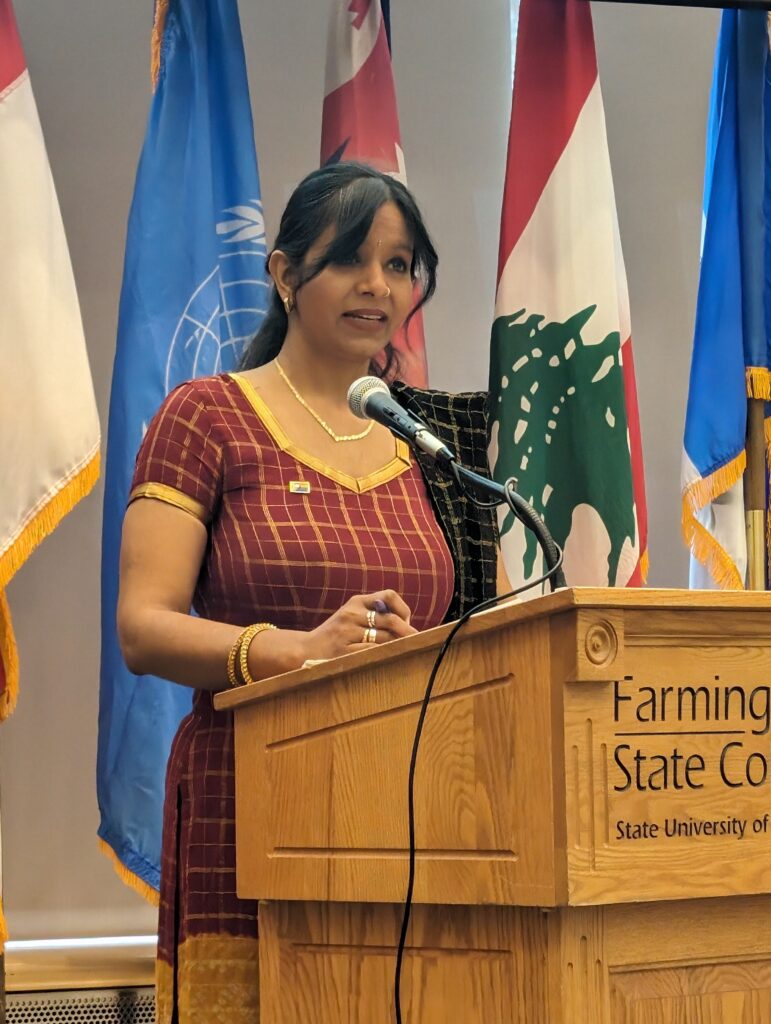
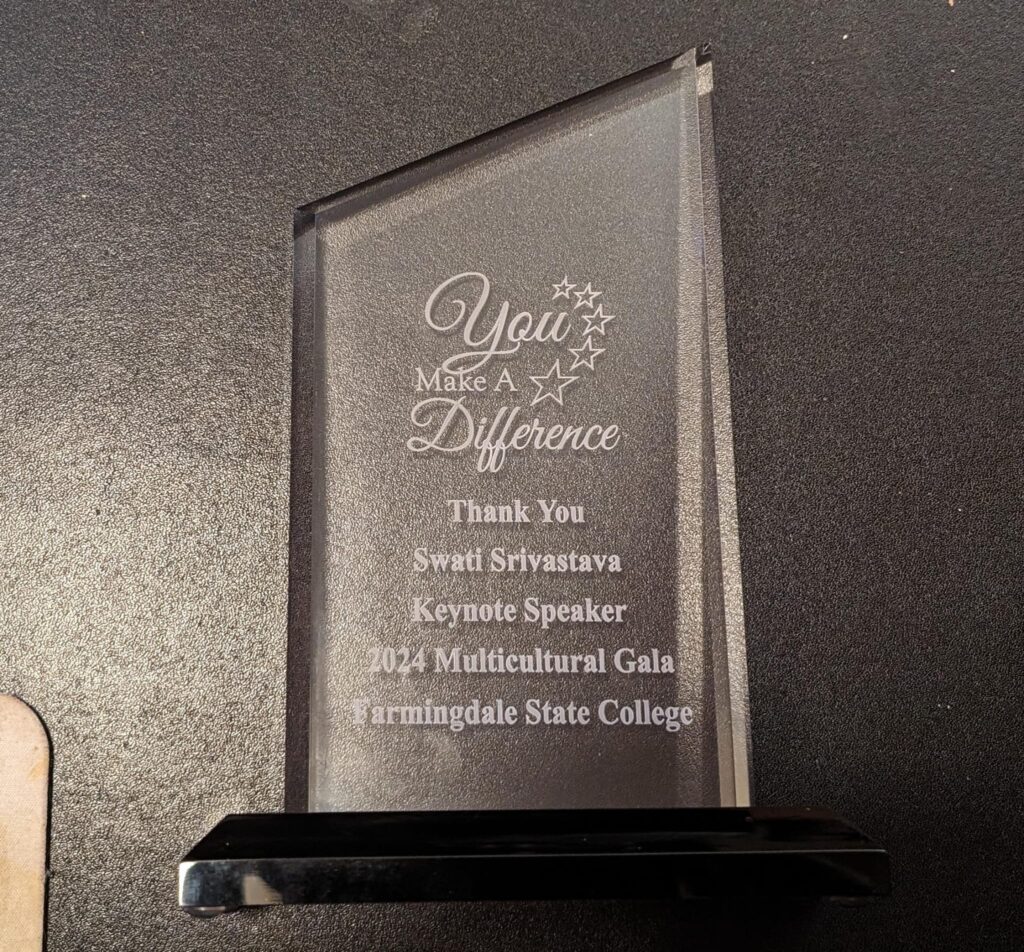
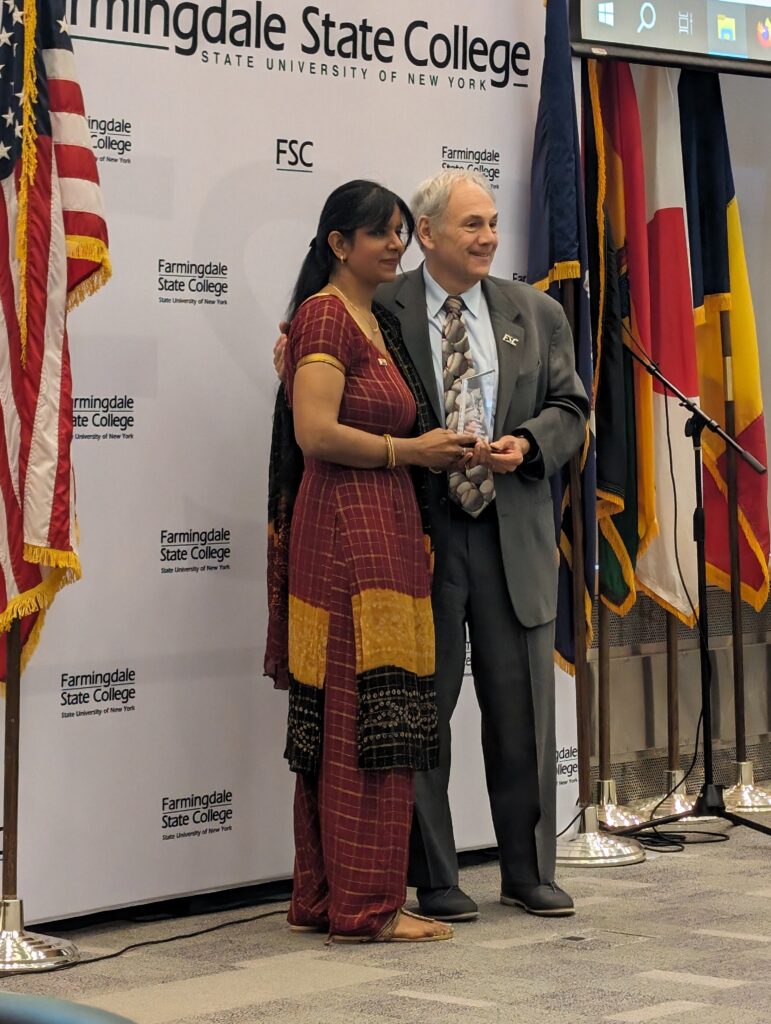
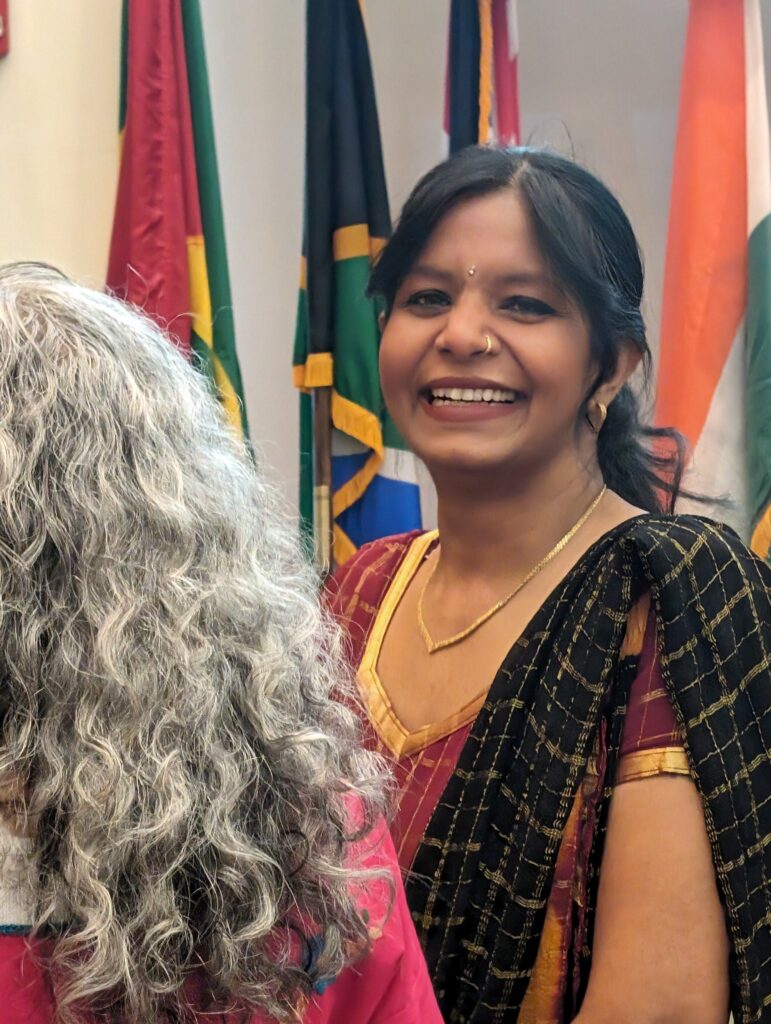
Introduction by Ms. Christine Larkin –
It is my honor to introduce this year’s Multicultural Gala Keynote Speaker, Swati Srivastava. Former woman in STEM now a woman in FILM, Swati is an immigrant and a multi award-winning writer, director, and voiceover artist. She has directed several short films, short documentaries, music videos and political ads that have gone on to win several awards including the “Most Important Story of the Year” award from CNN-India aired nationally in India at prime-time.
Swati is also the Director of Visual Media for Crossing Party Lines as well as a trained facilitator for Civic Discourse & Dialogue. She frequently facilitates both online and in-person discussions.
Originally from India and having spent more than half her life in the United States, Swati sees the world with a unique east meets west lens. She loves storytelling, especially through visual media. She has a penchant for politics, and has a heartfelt desire to be part of the solution for what she believes is the most challenging problem of our time; our inability to listen to each other.
Swati turns ideas into experiences. She is actively involved in her community and curates and hosts a monthly art and culture program called “A Box of Chocolates.” Swati is also an avid environmentalist and lives with her husband in a “Net-Zero Energy” house here on Long Island. It has been featured on mass media including the television station, NBC.
Please give a warm welcome to this year’s Keynote Speaker, Ms. Swati Srivastava.

